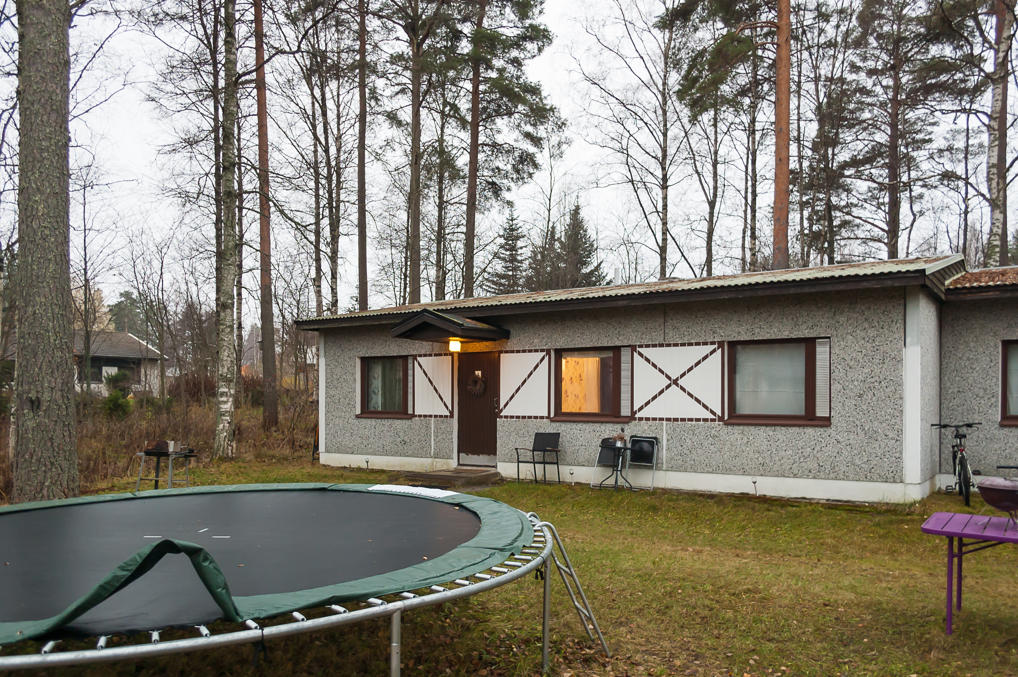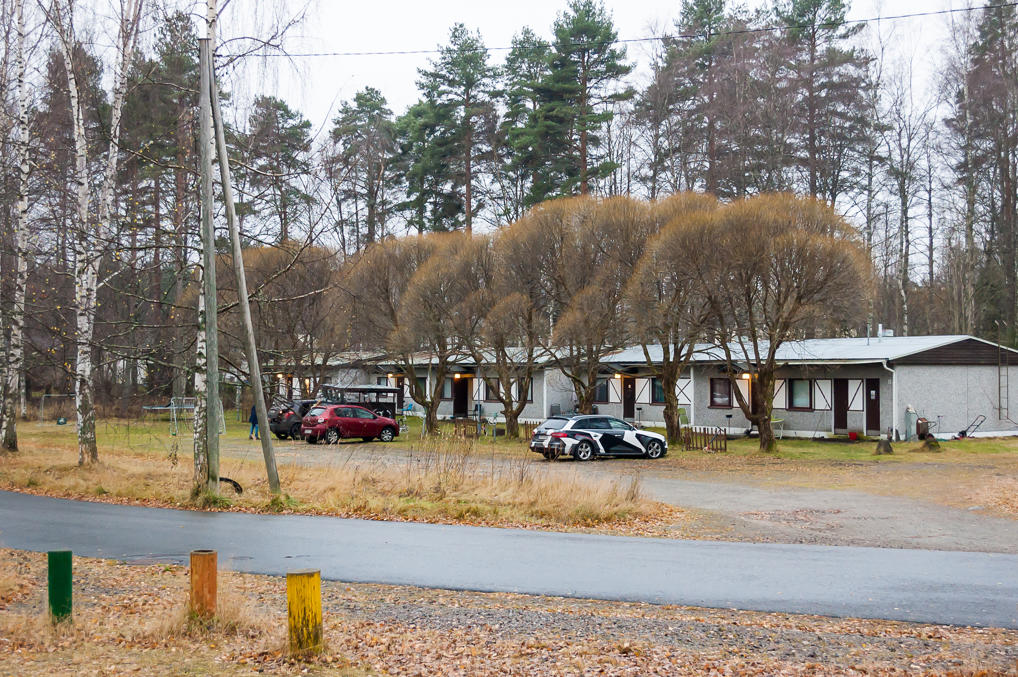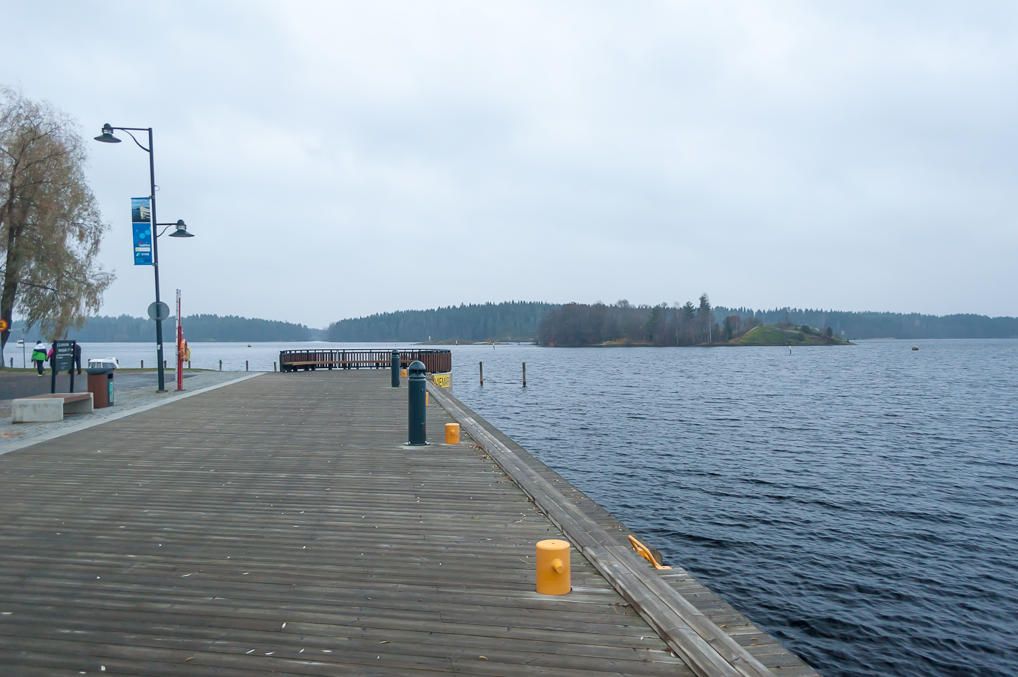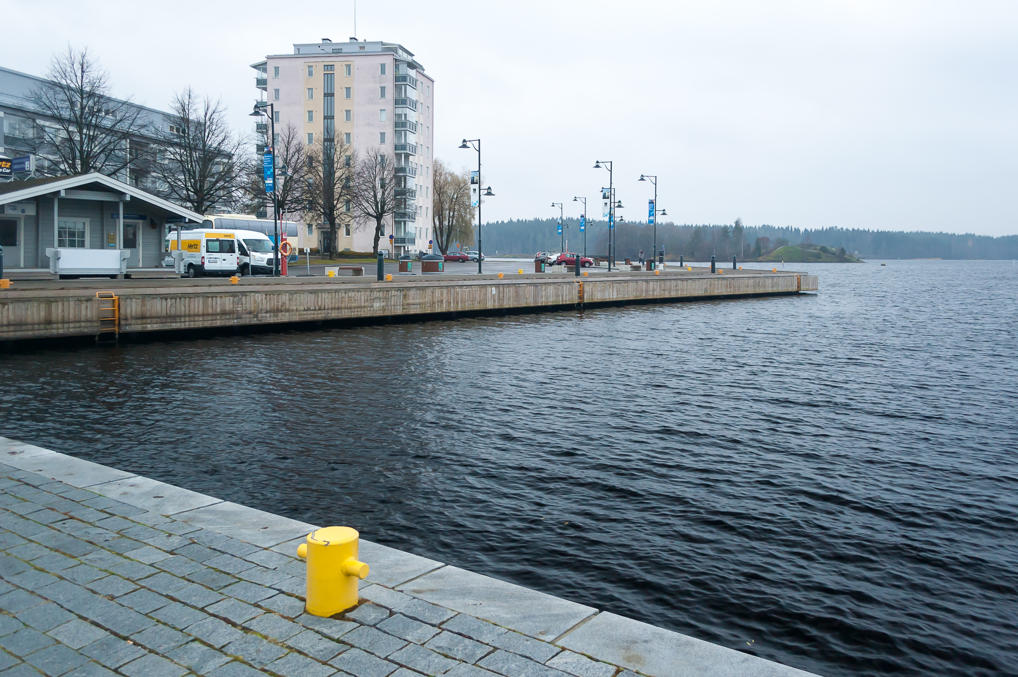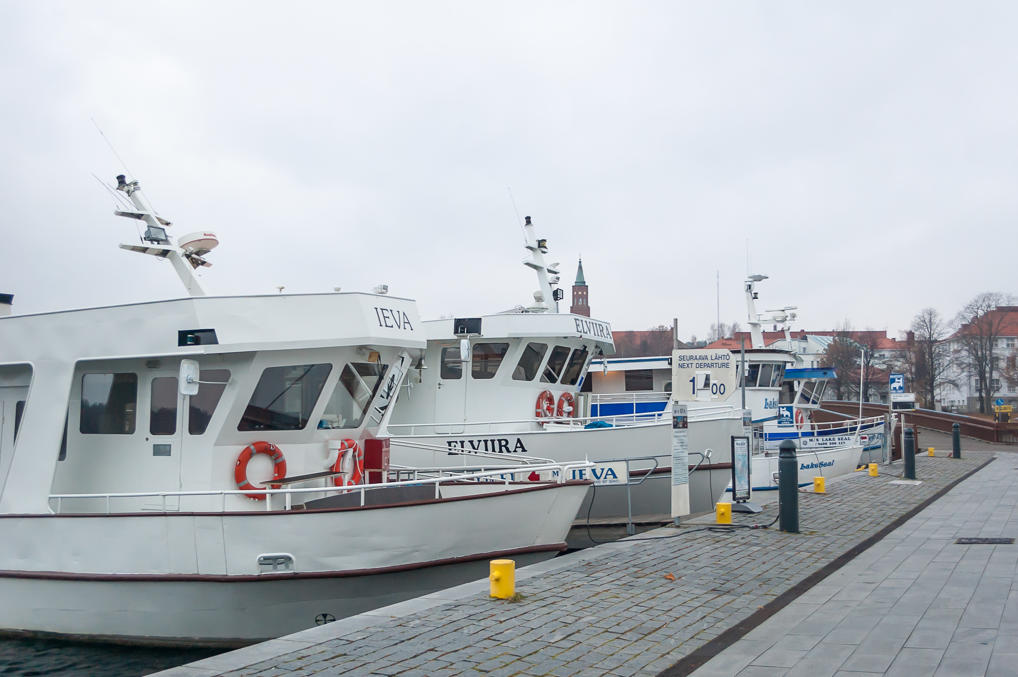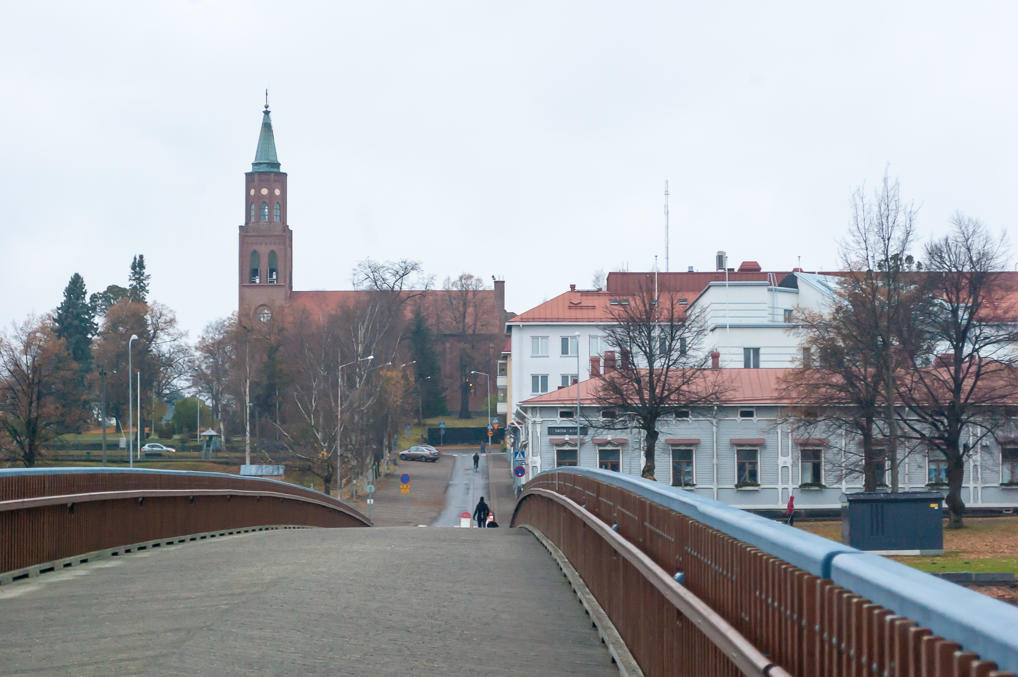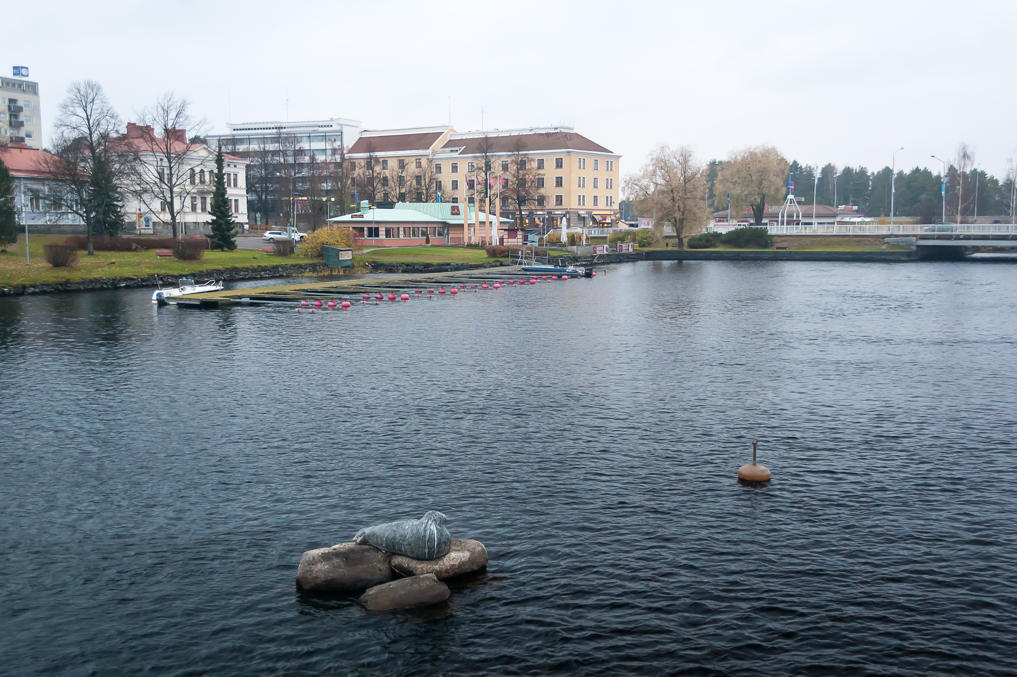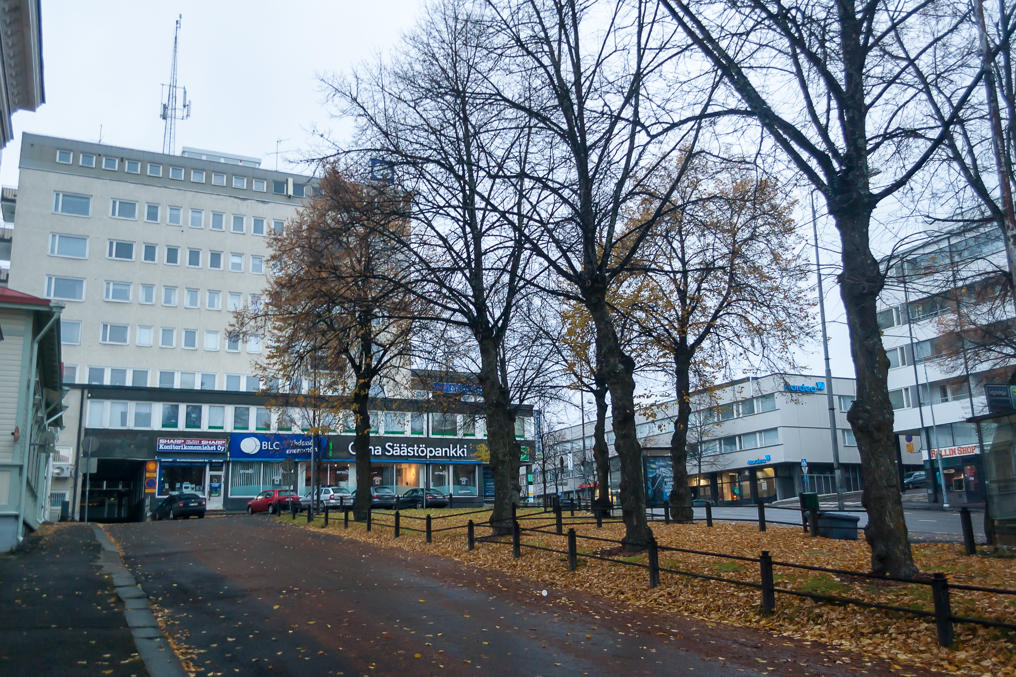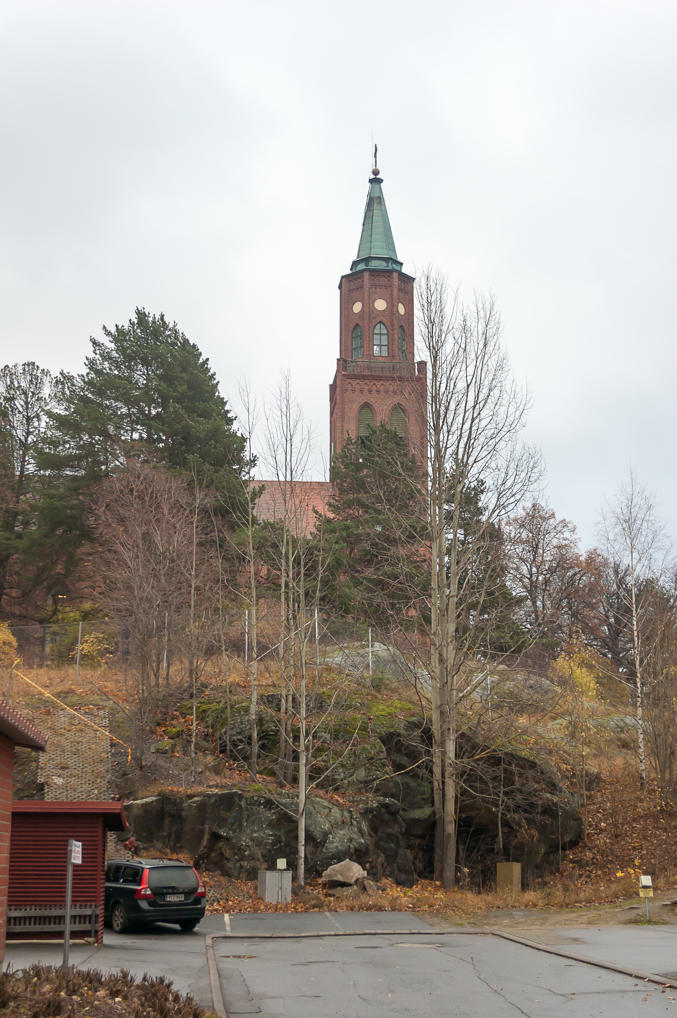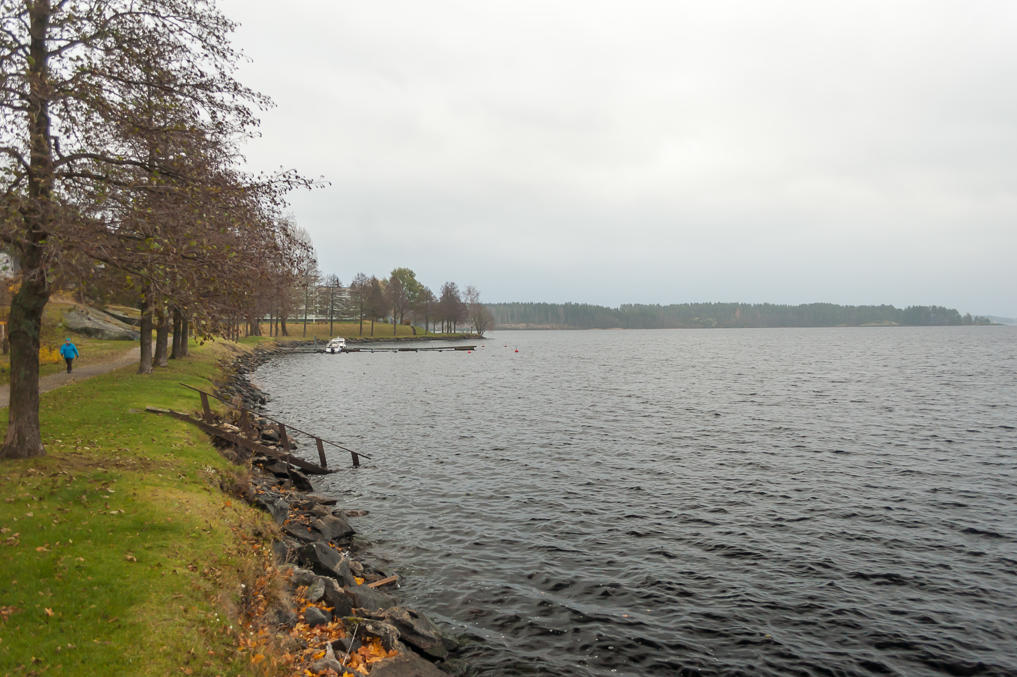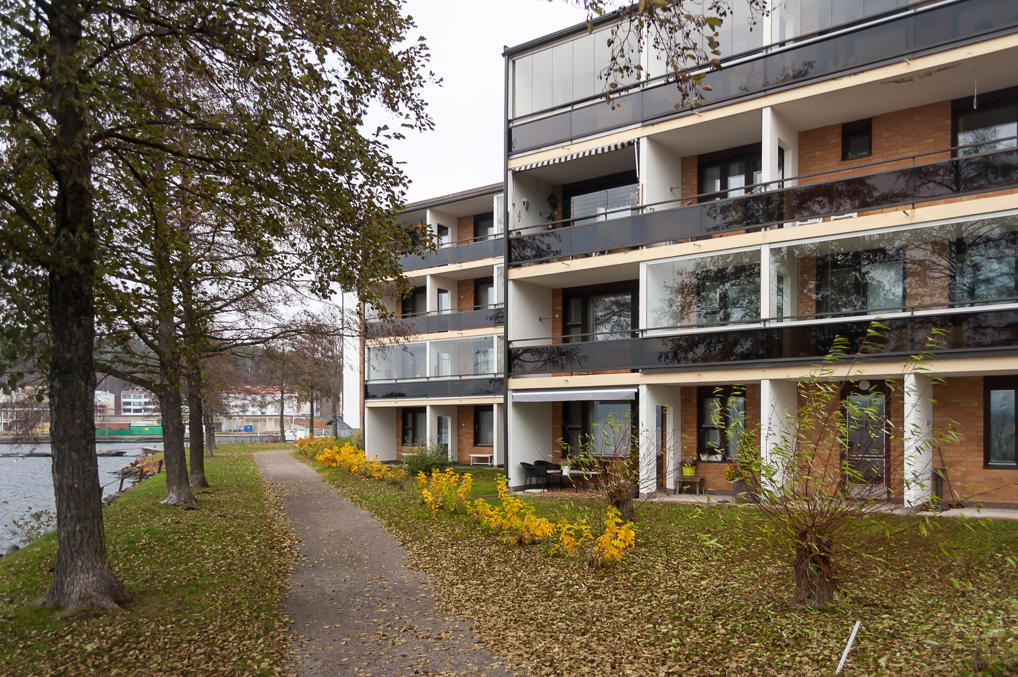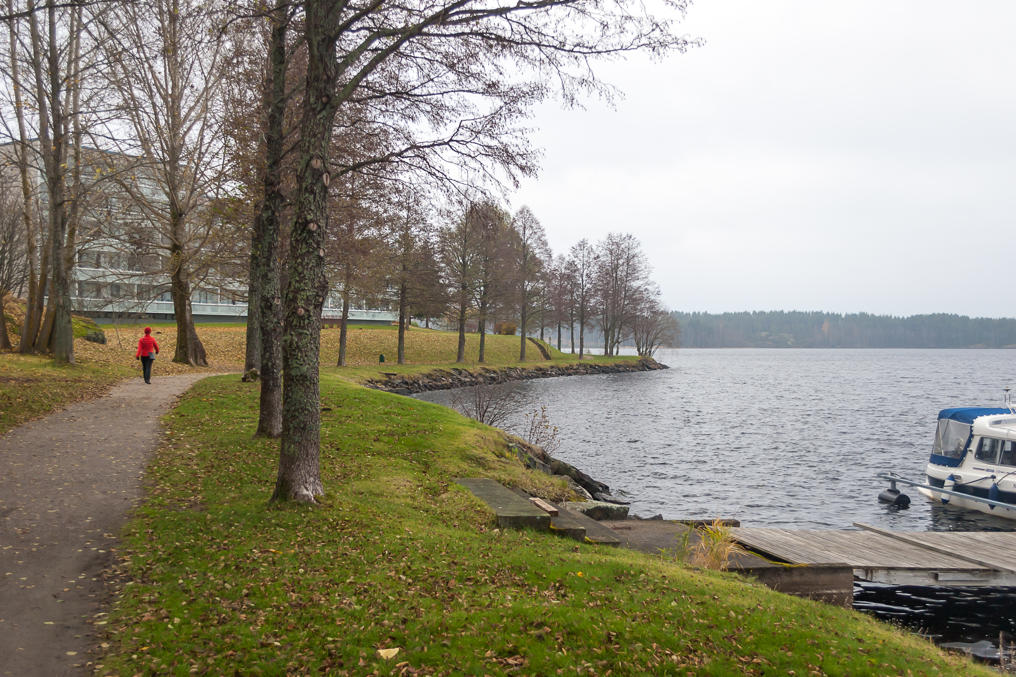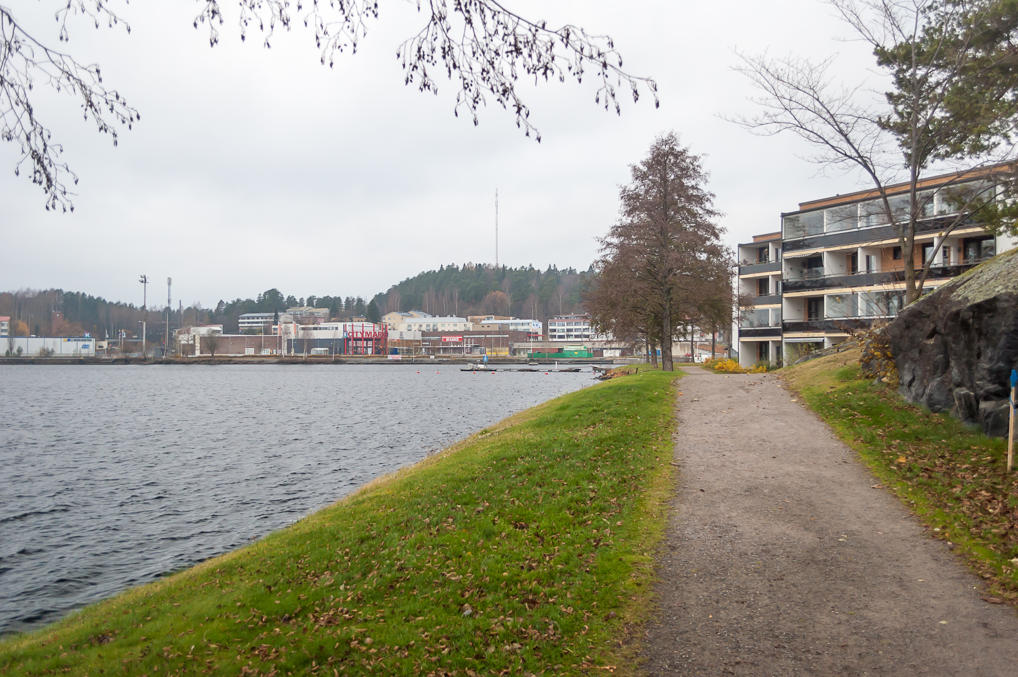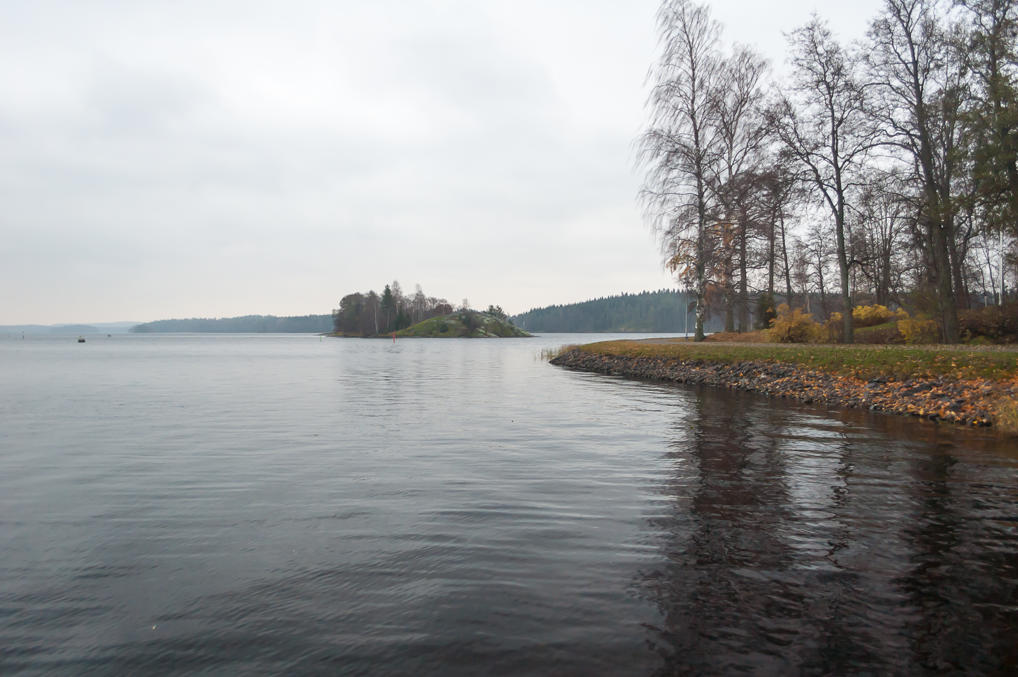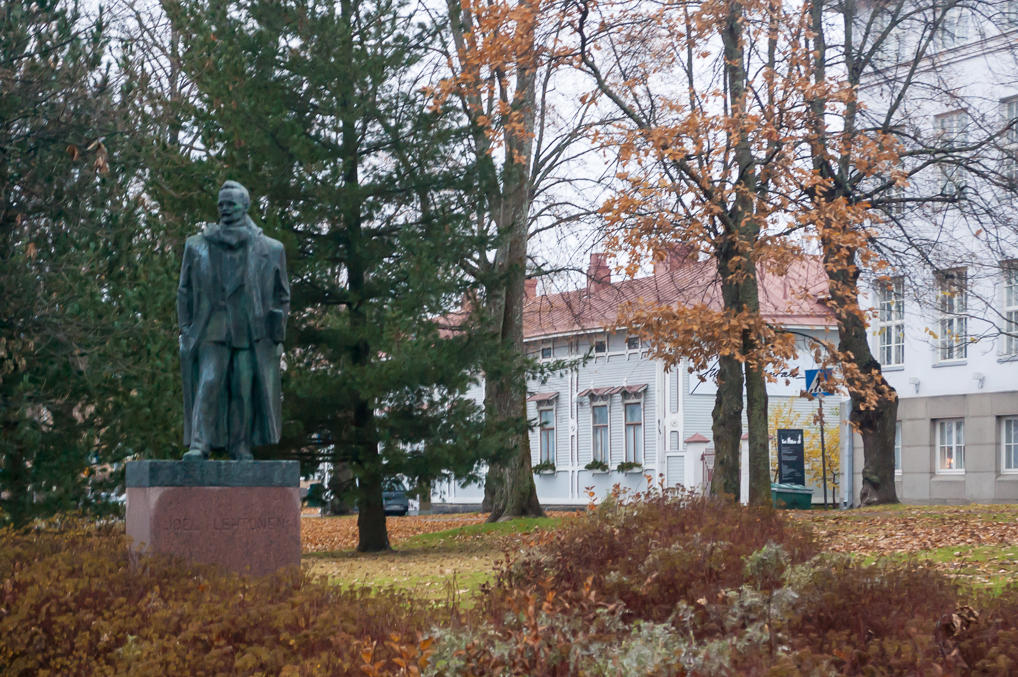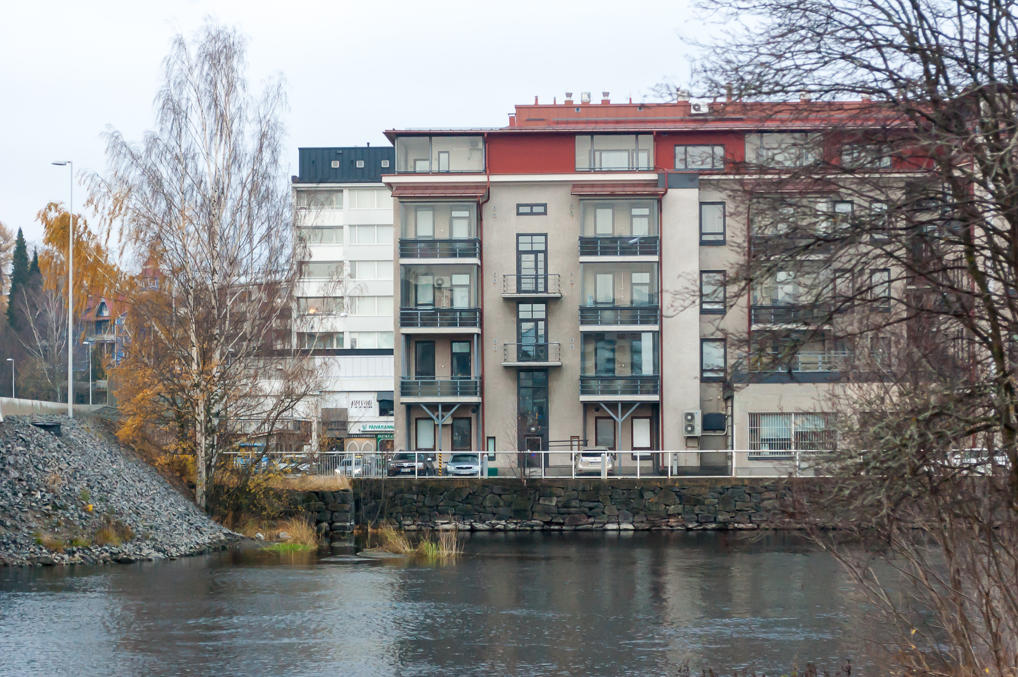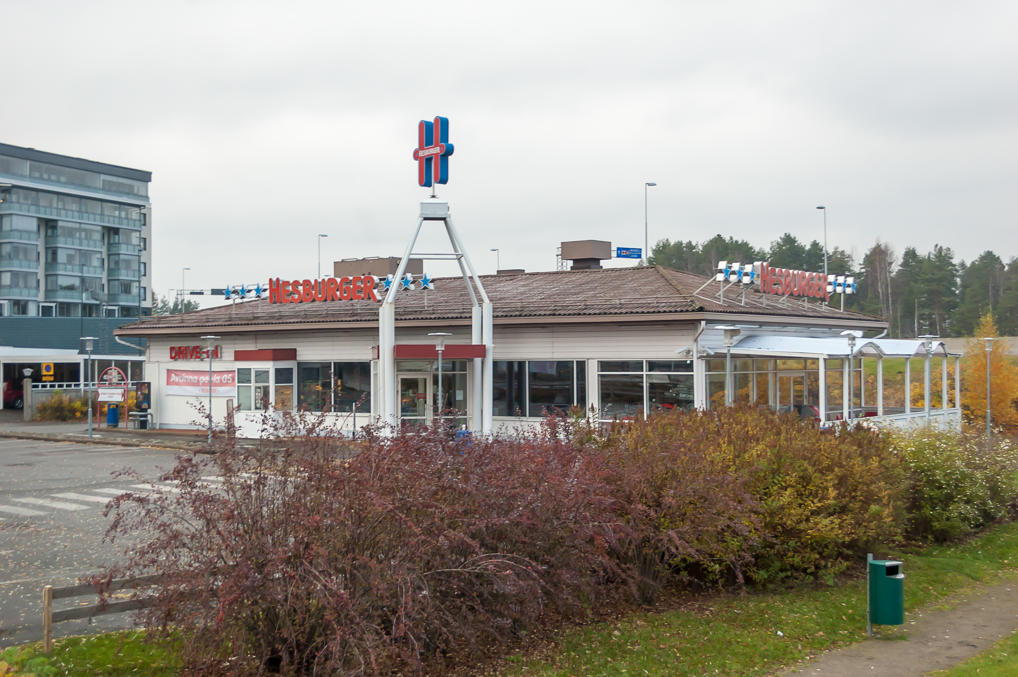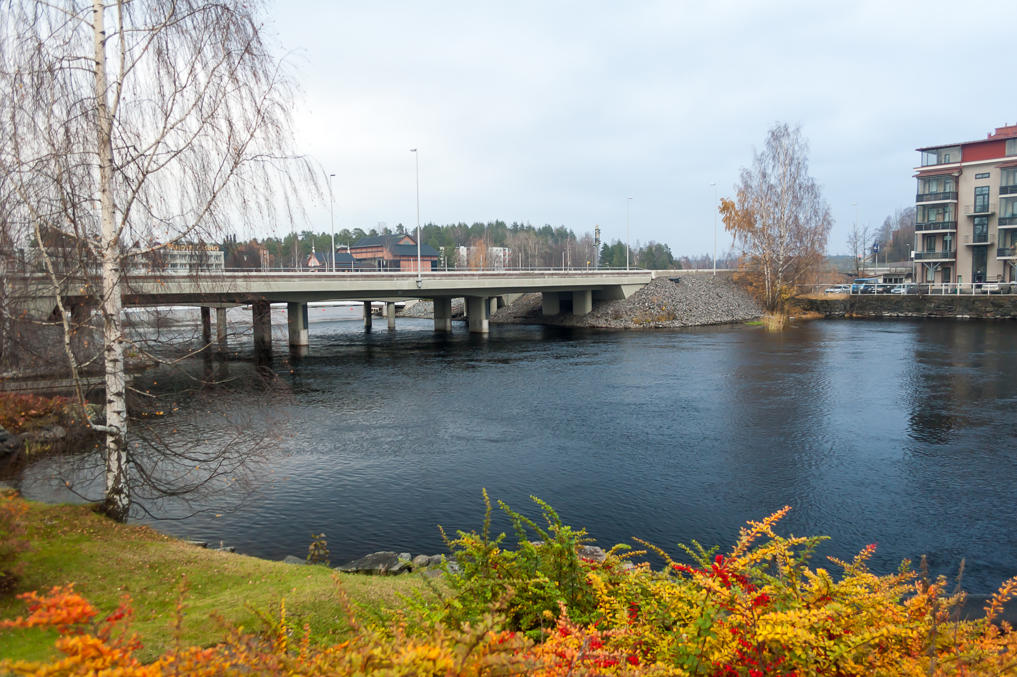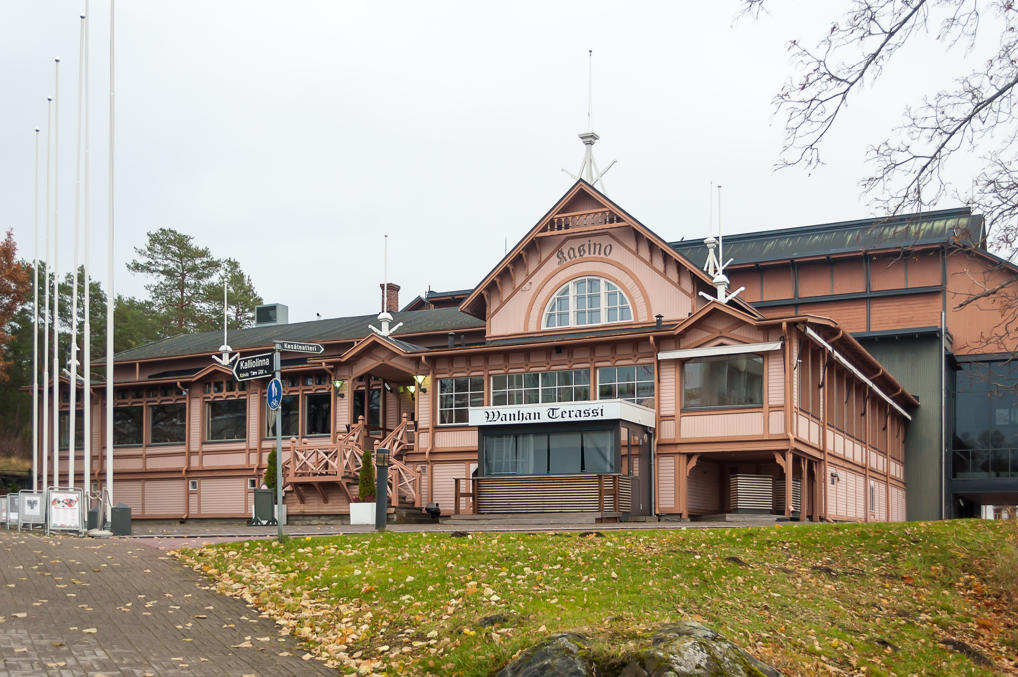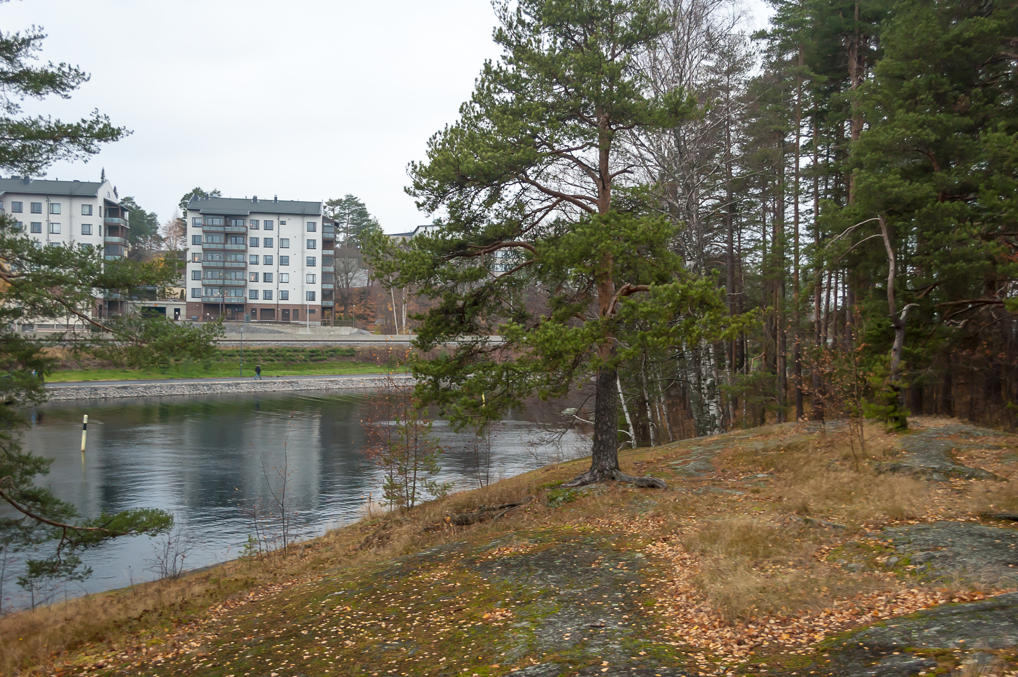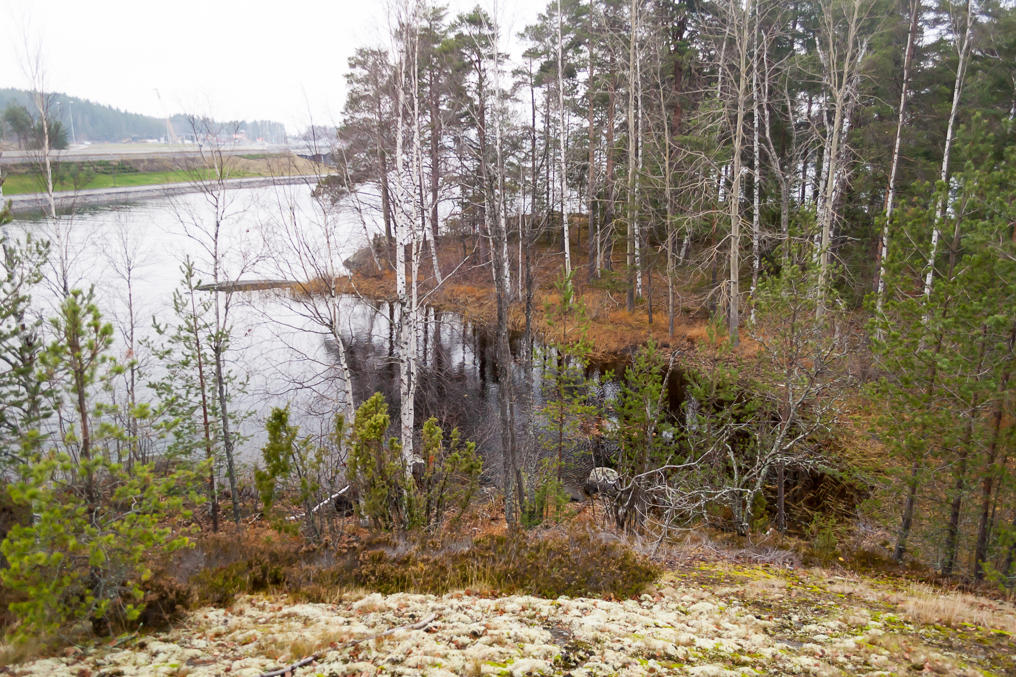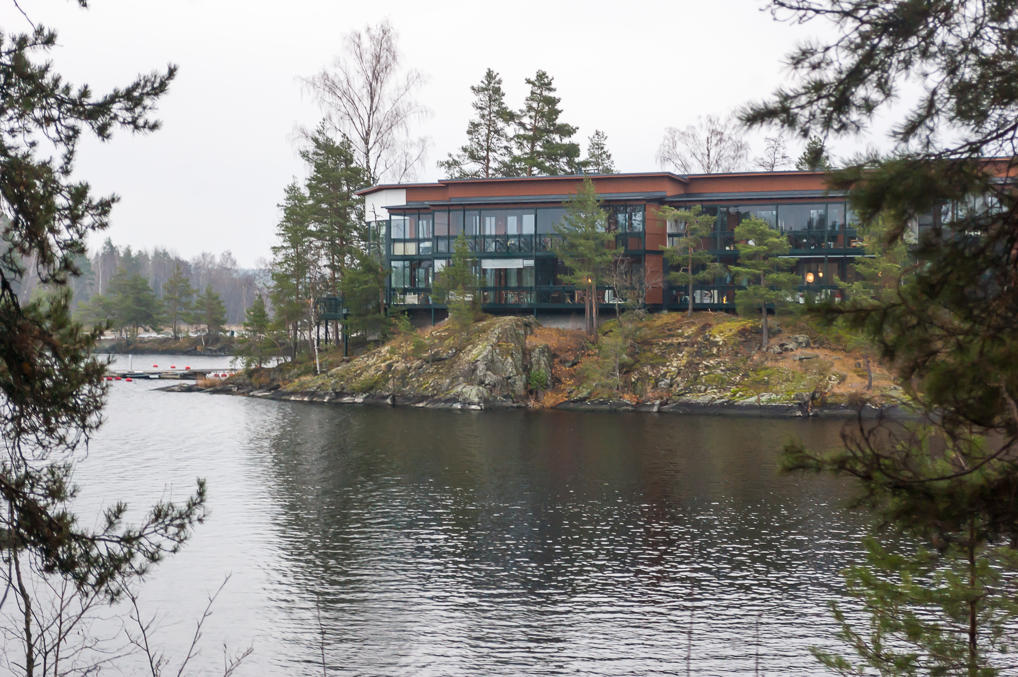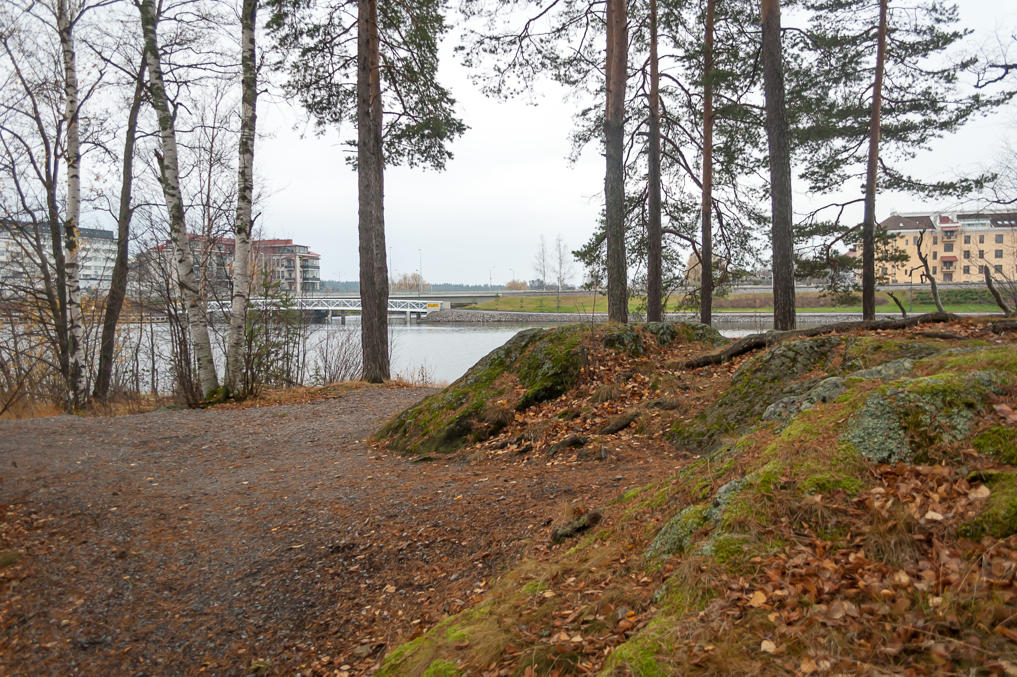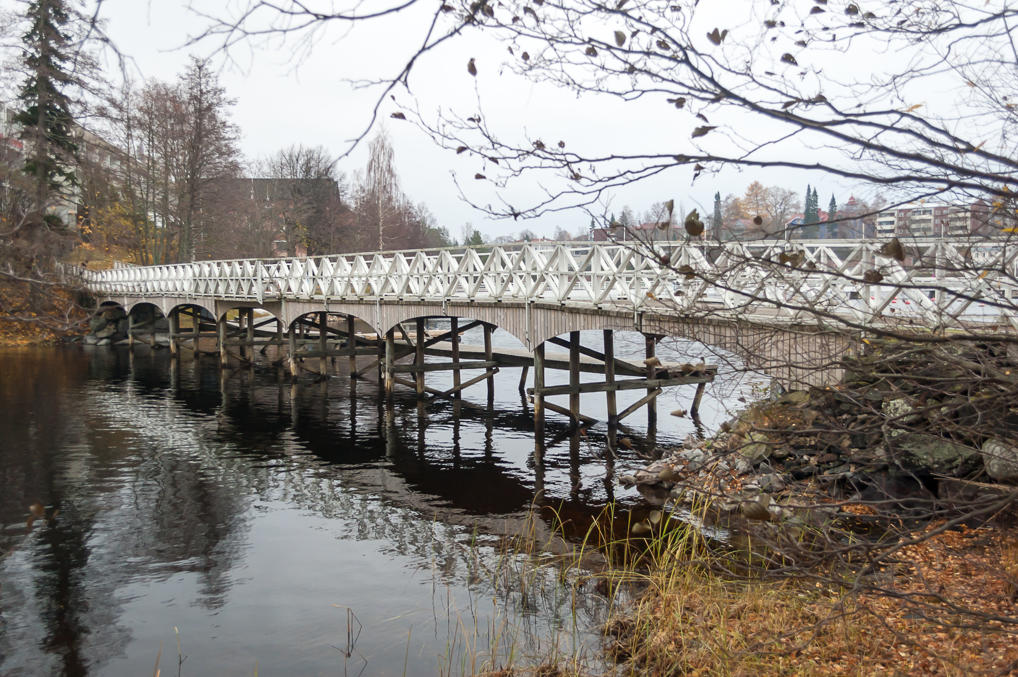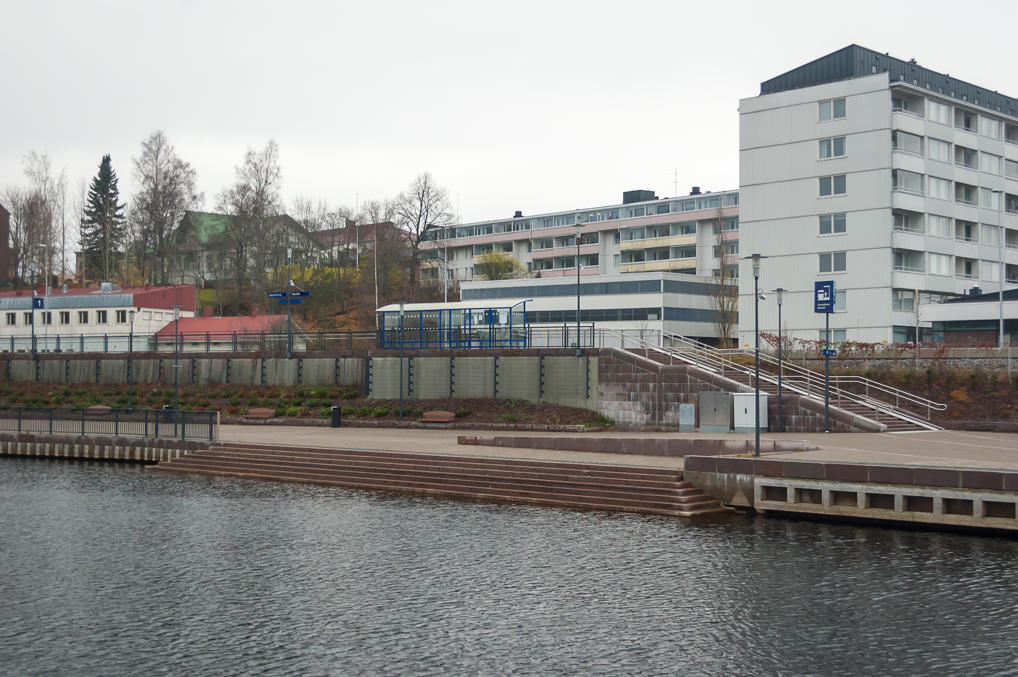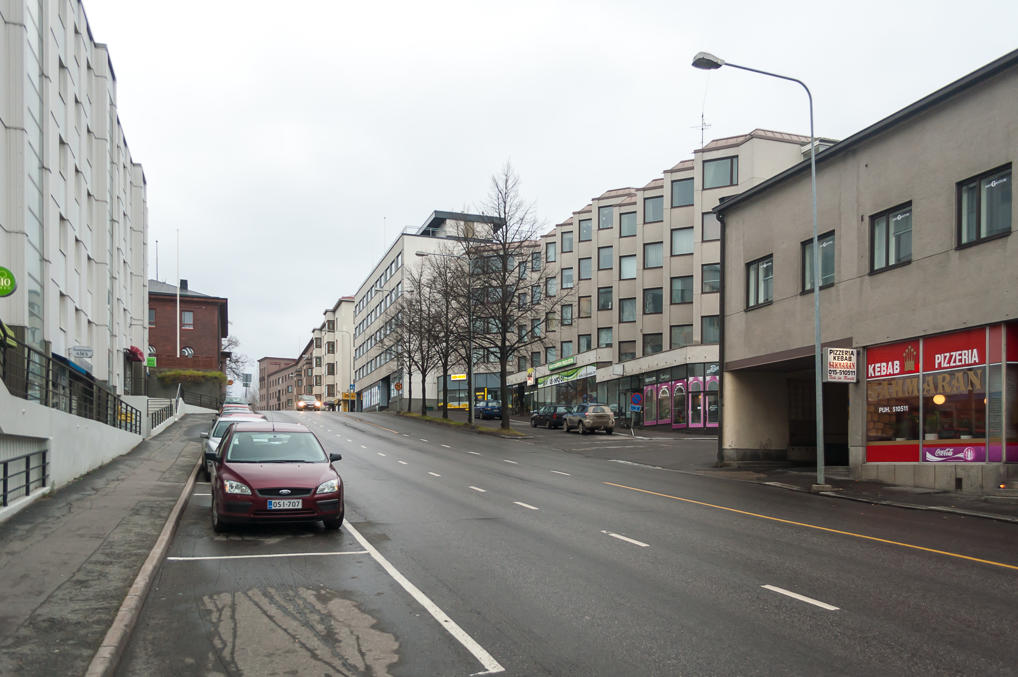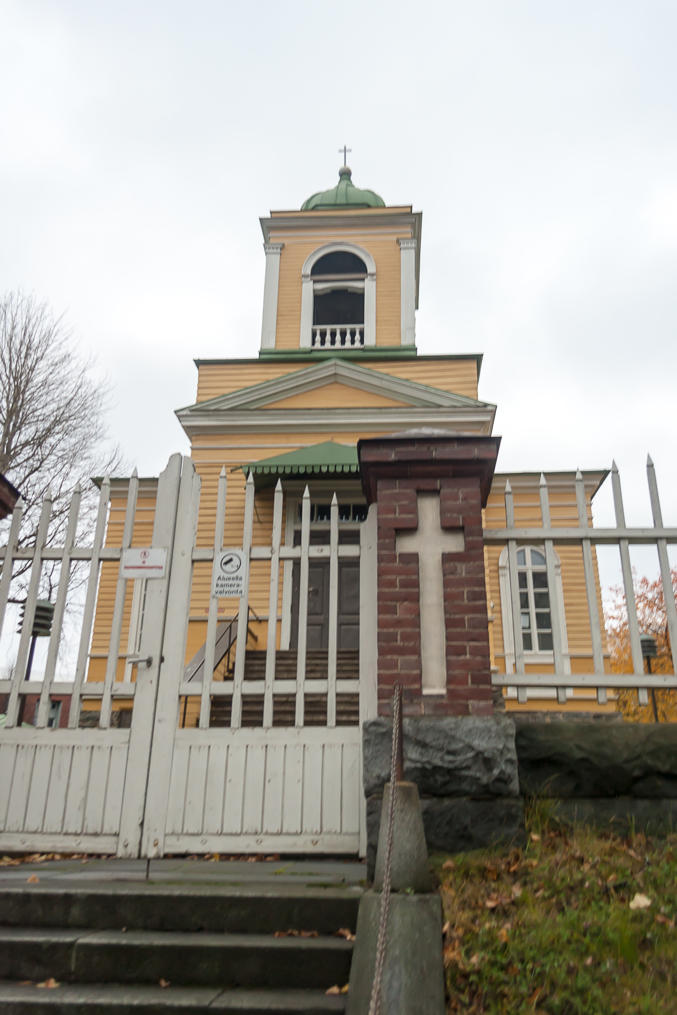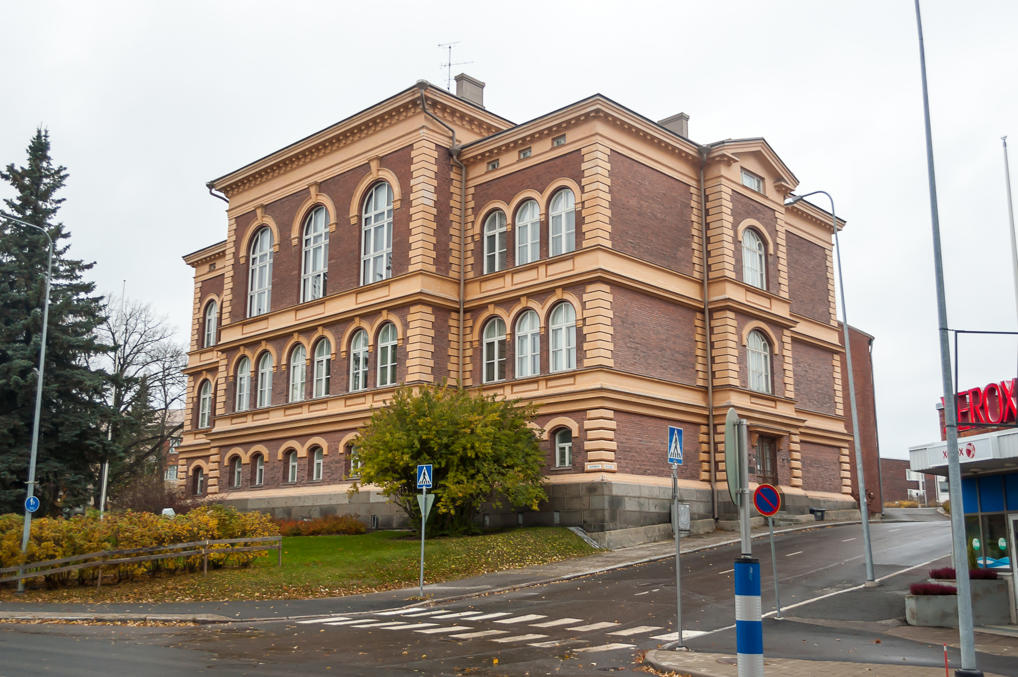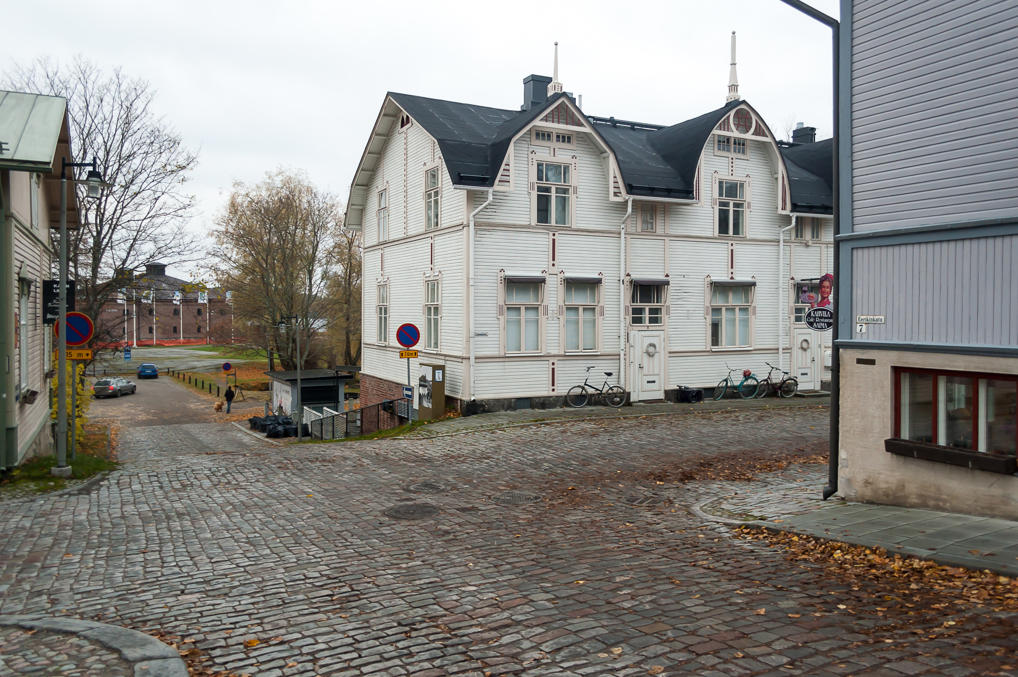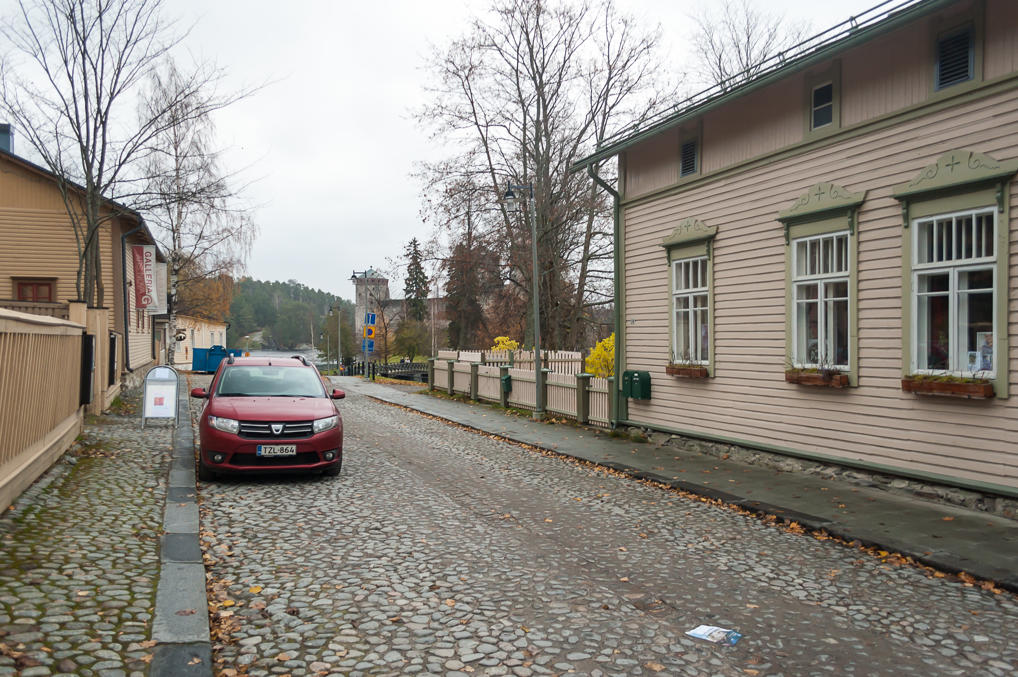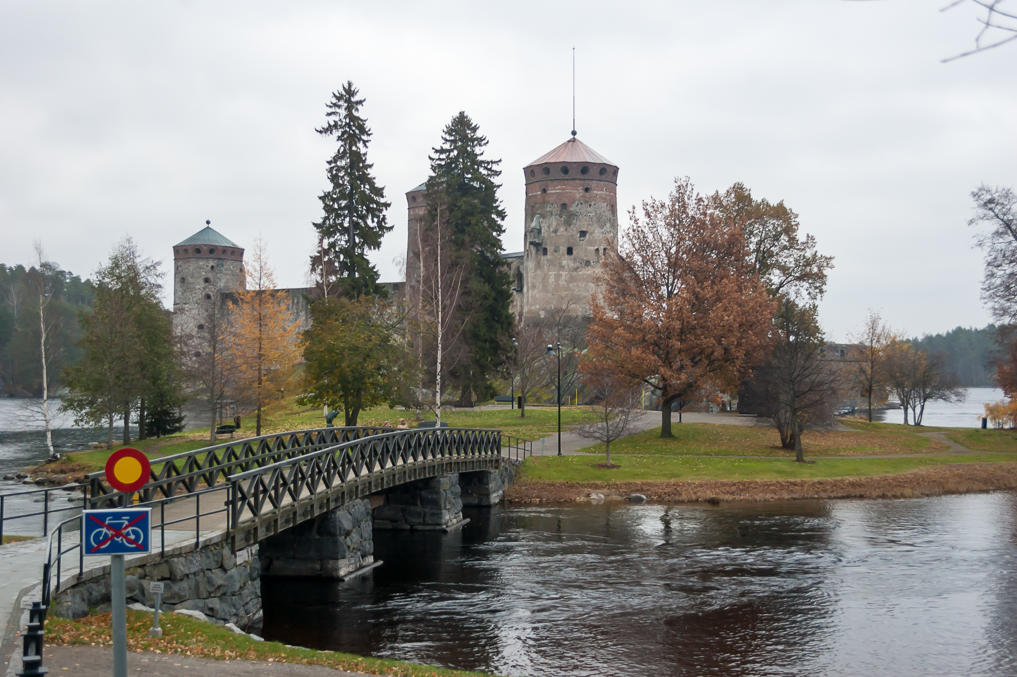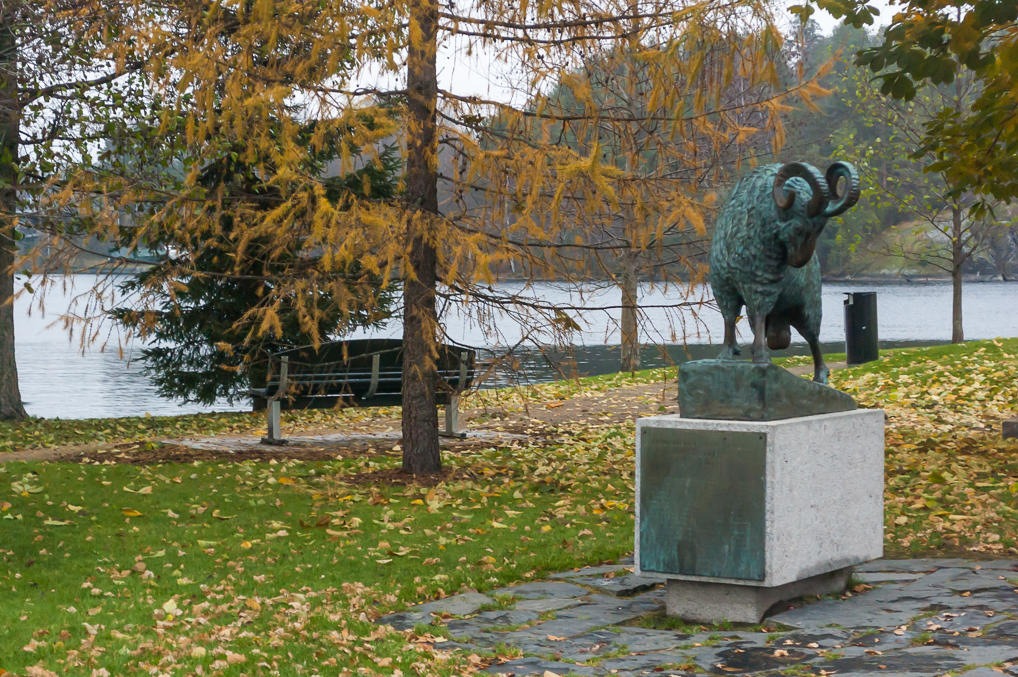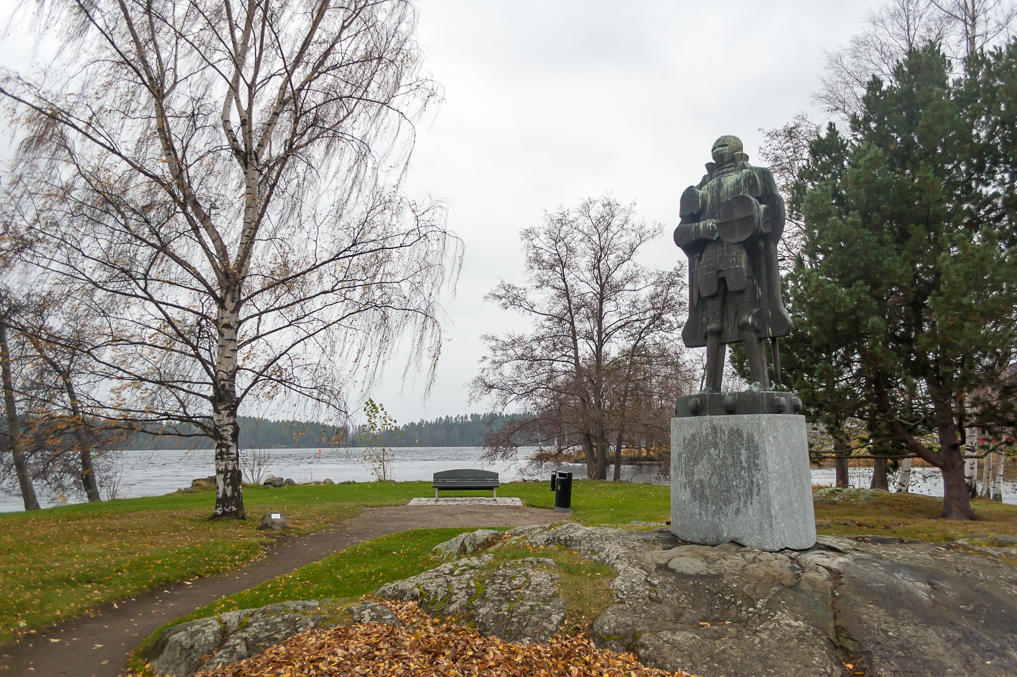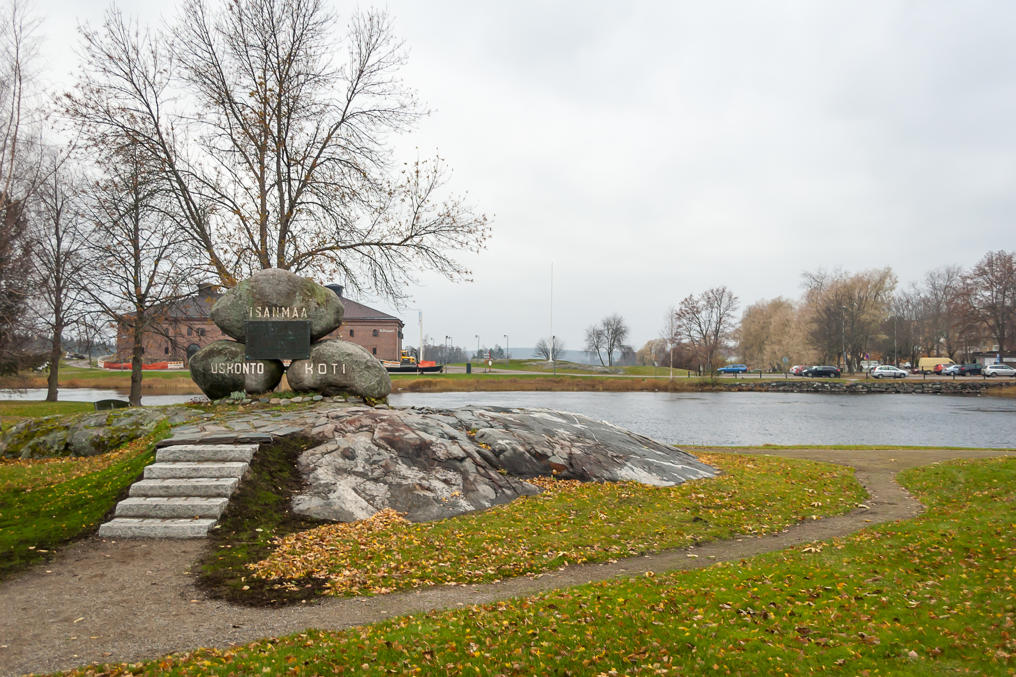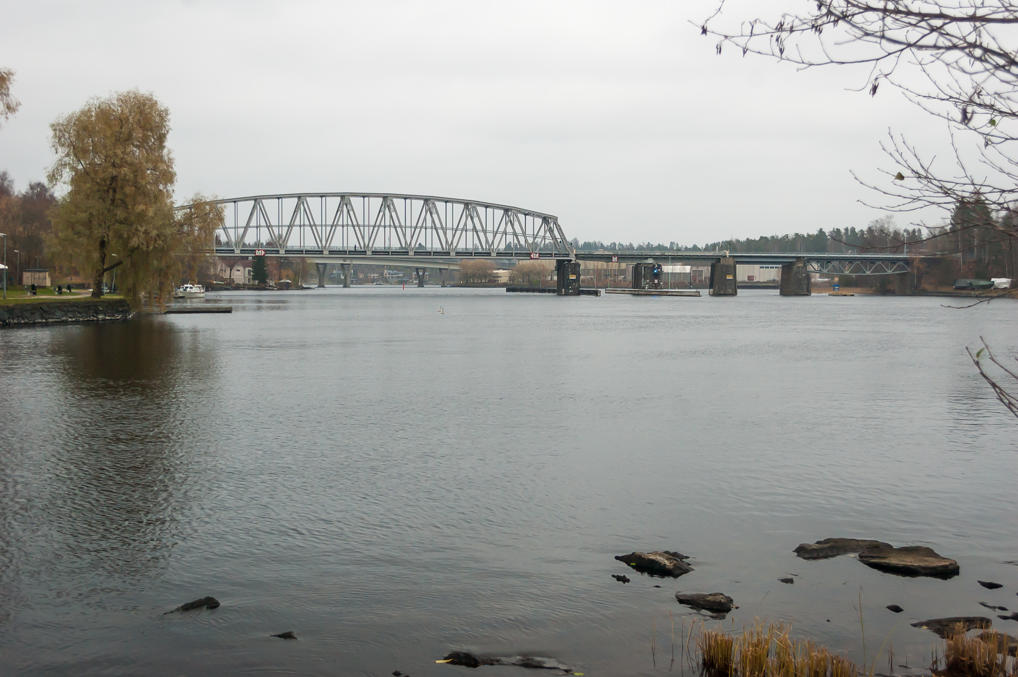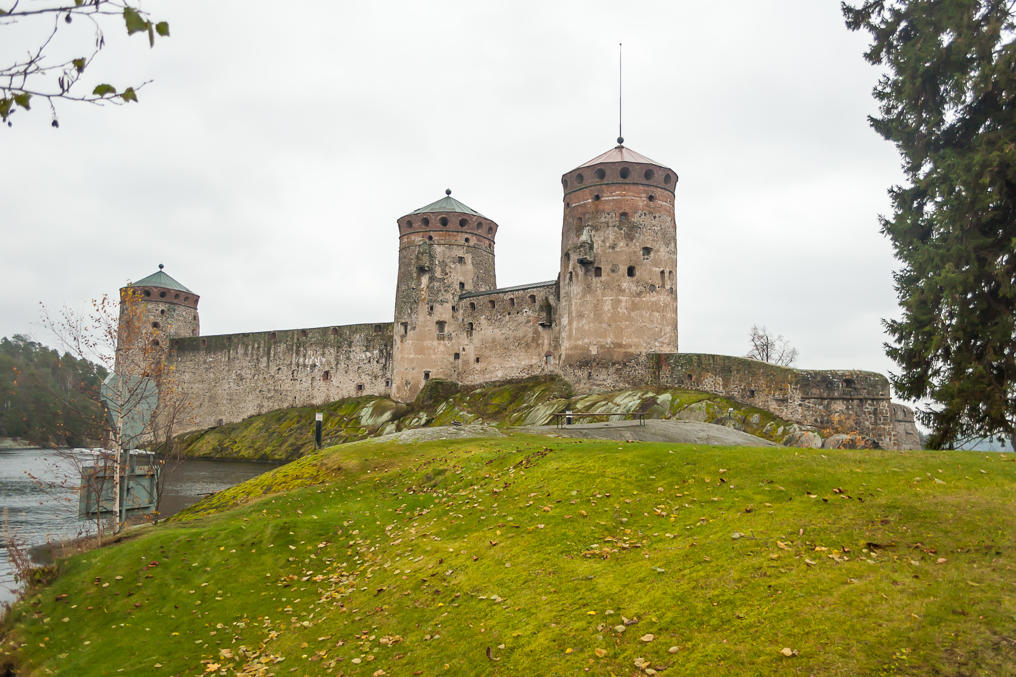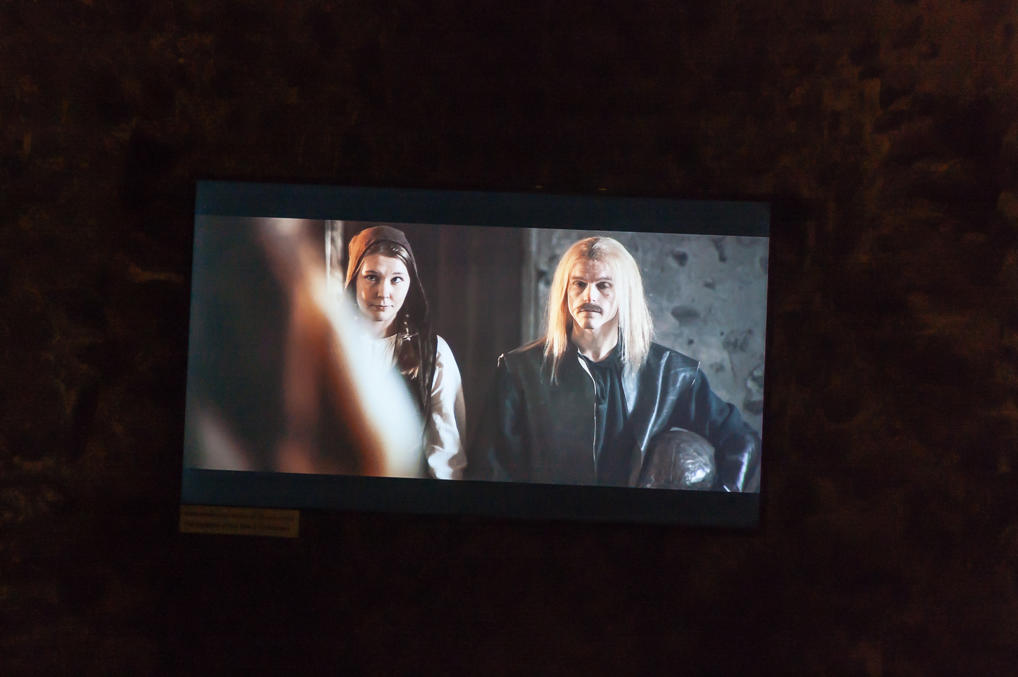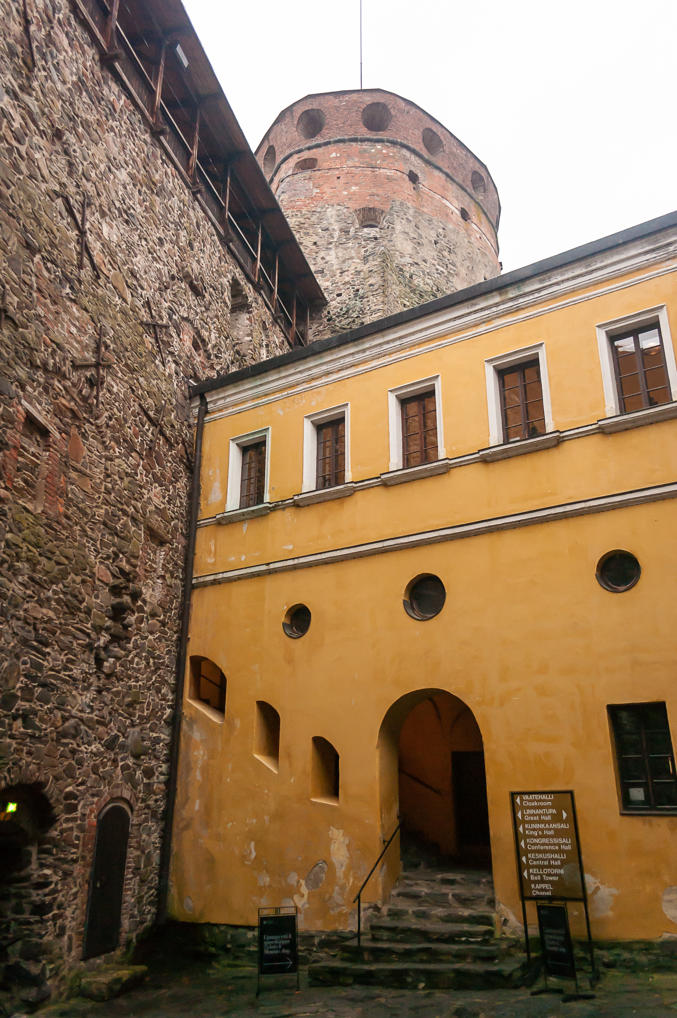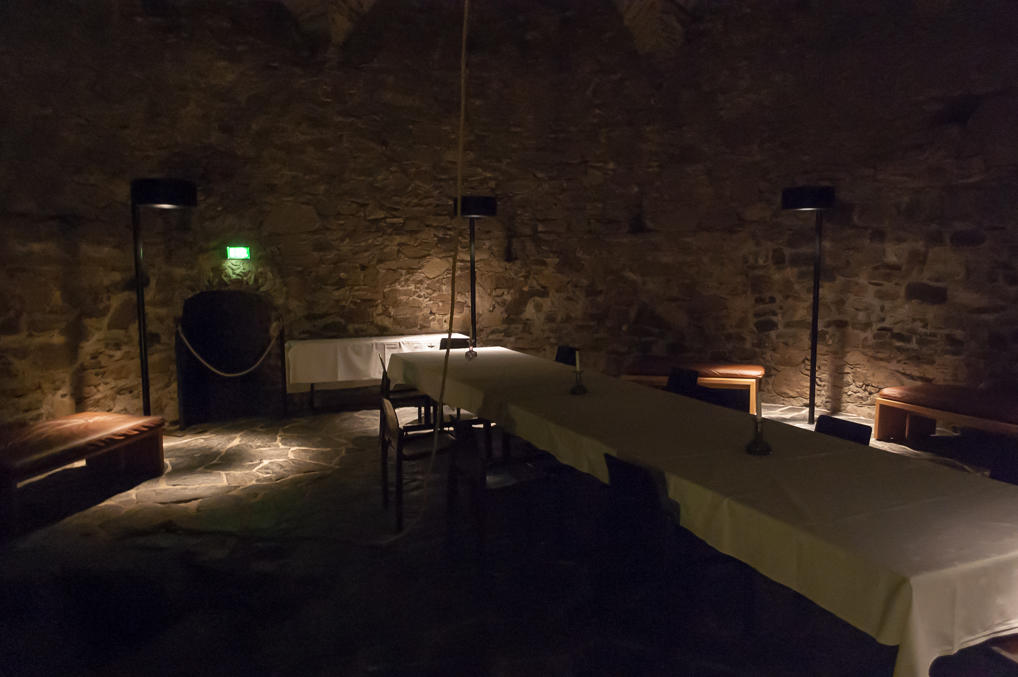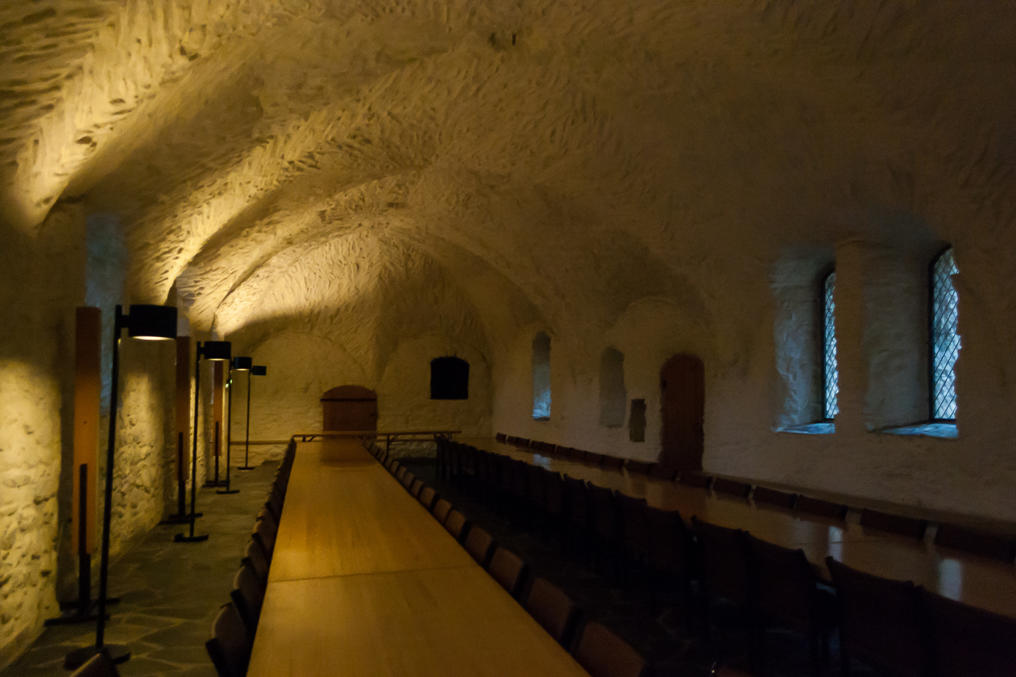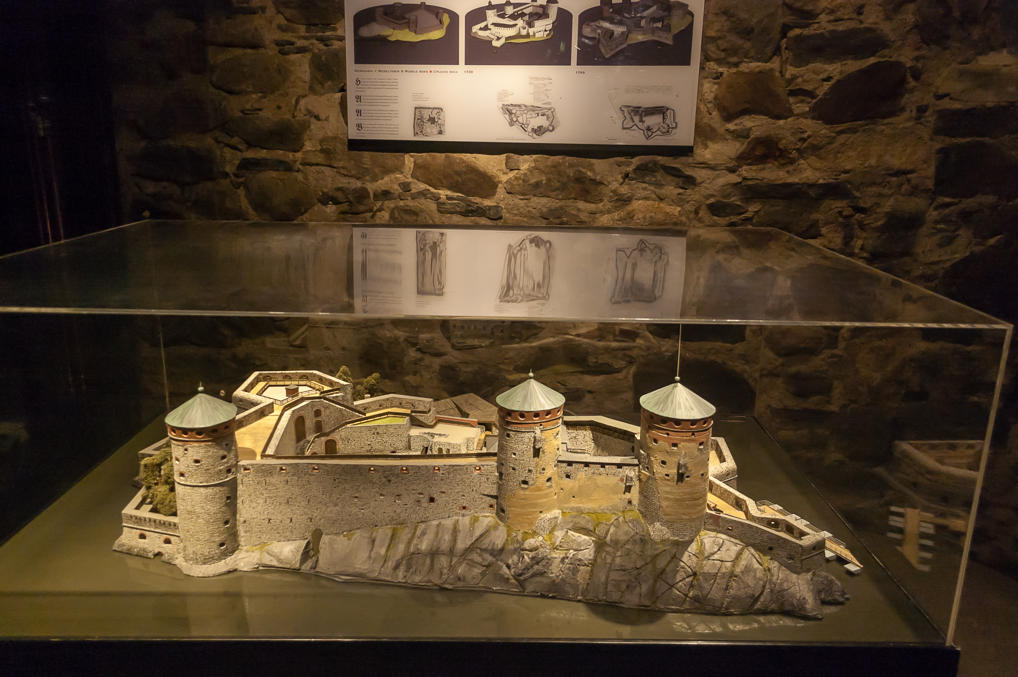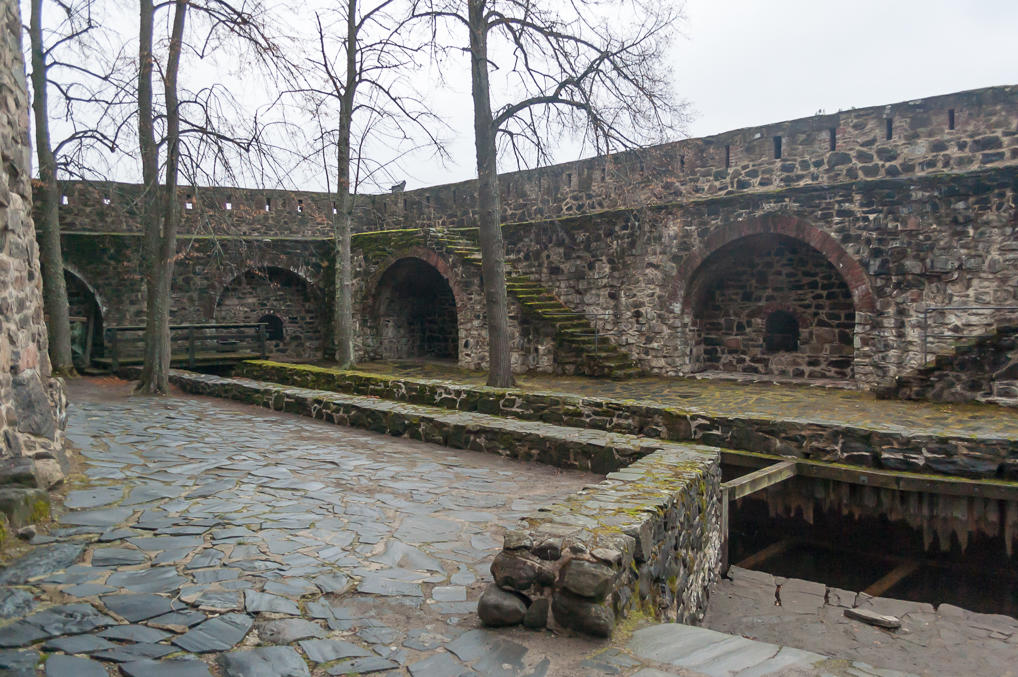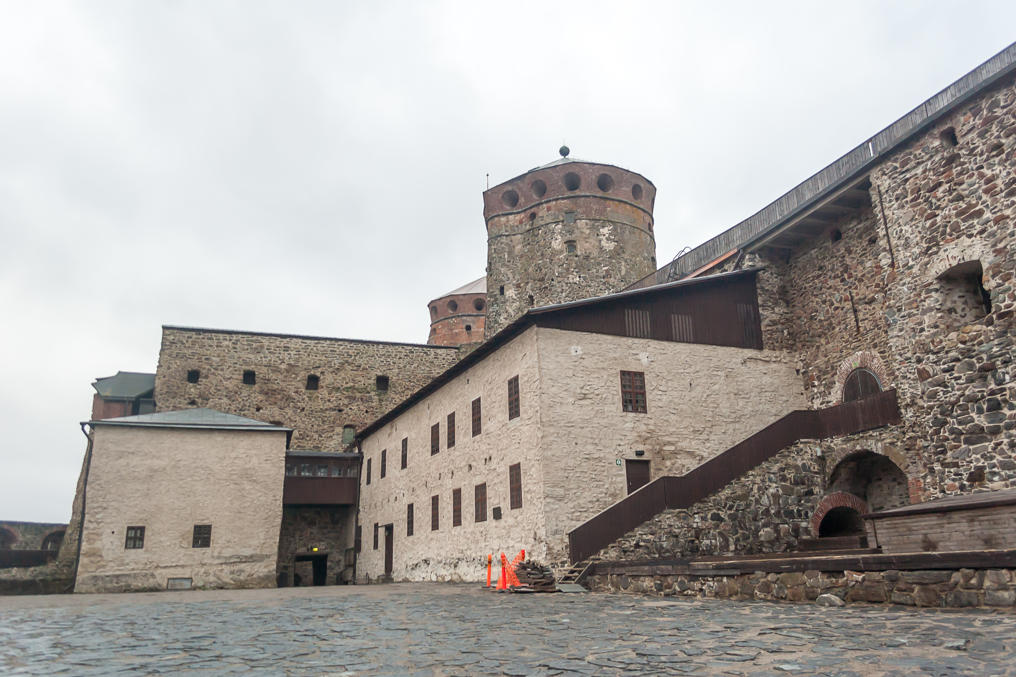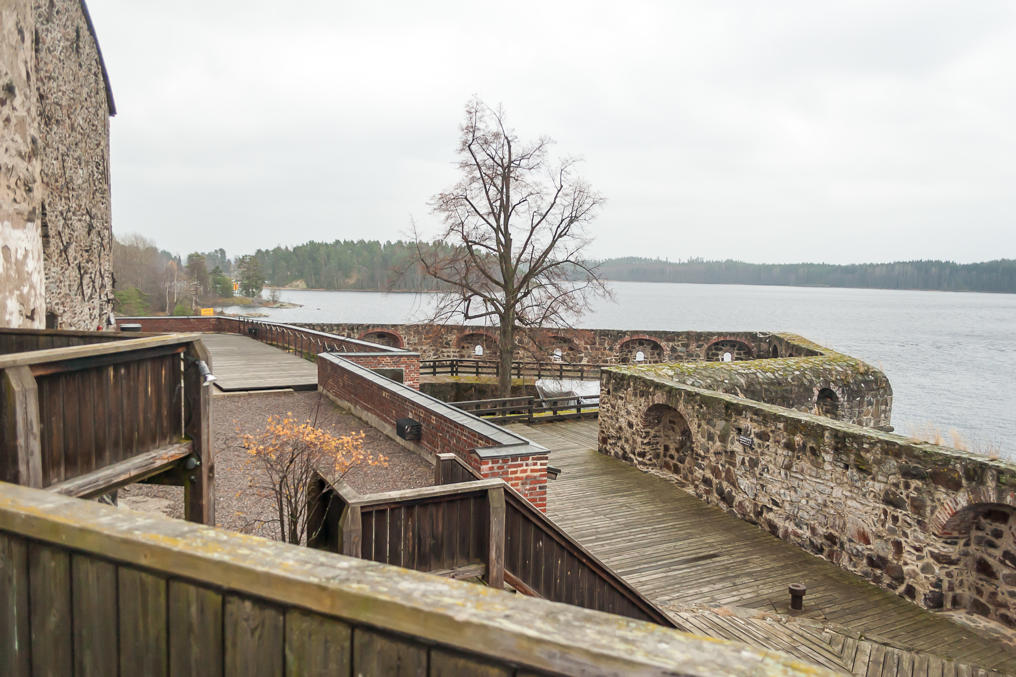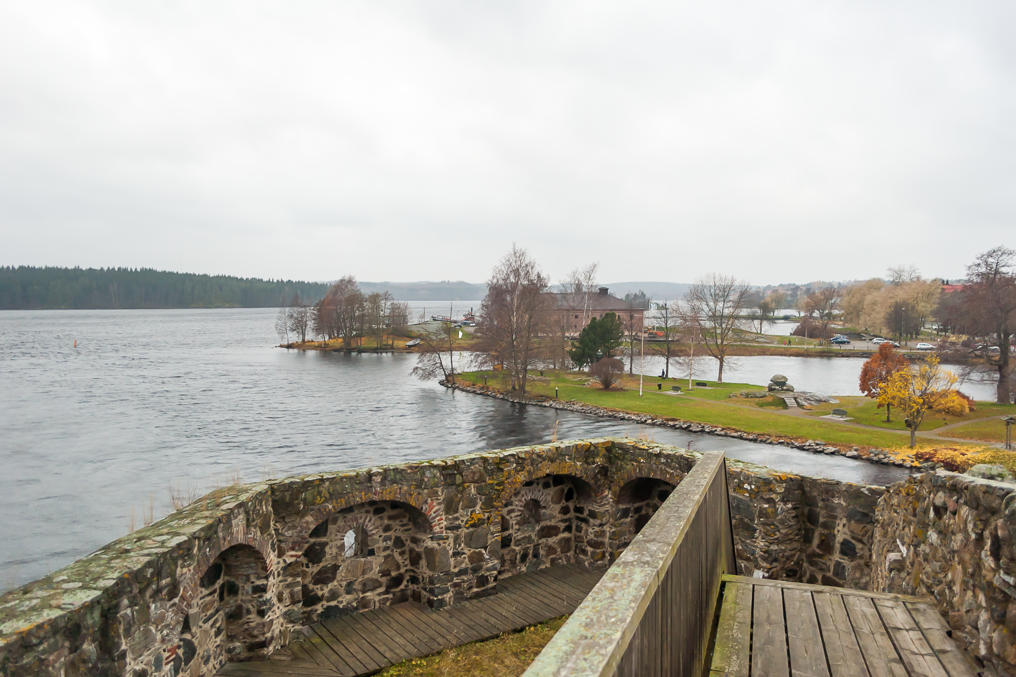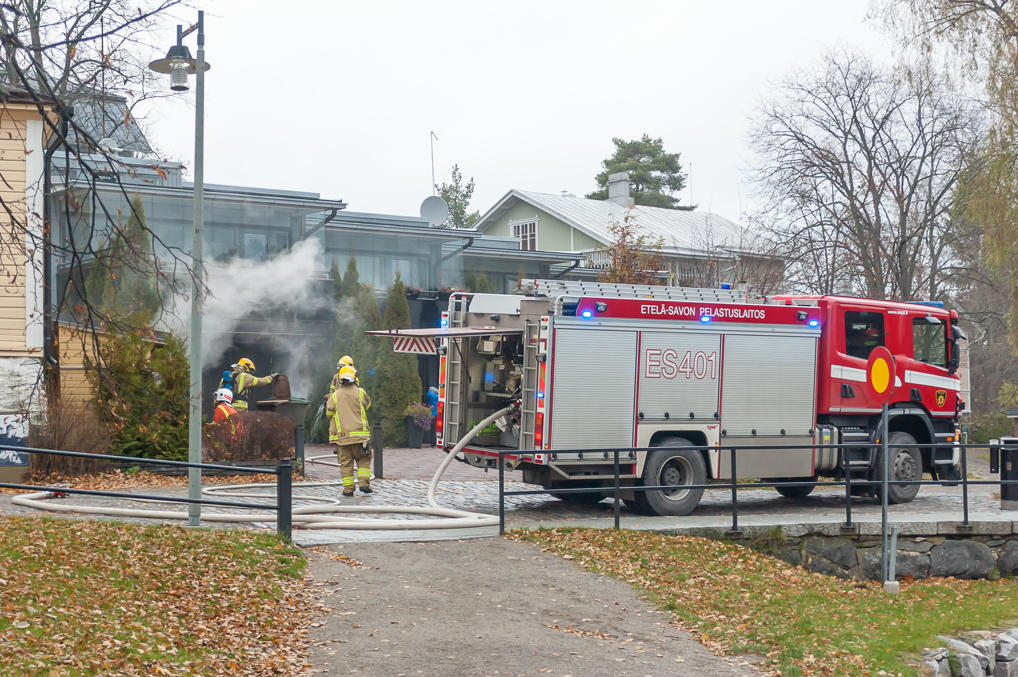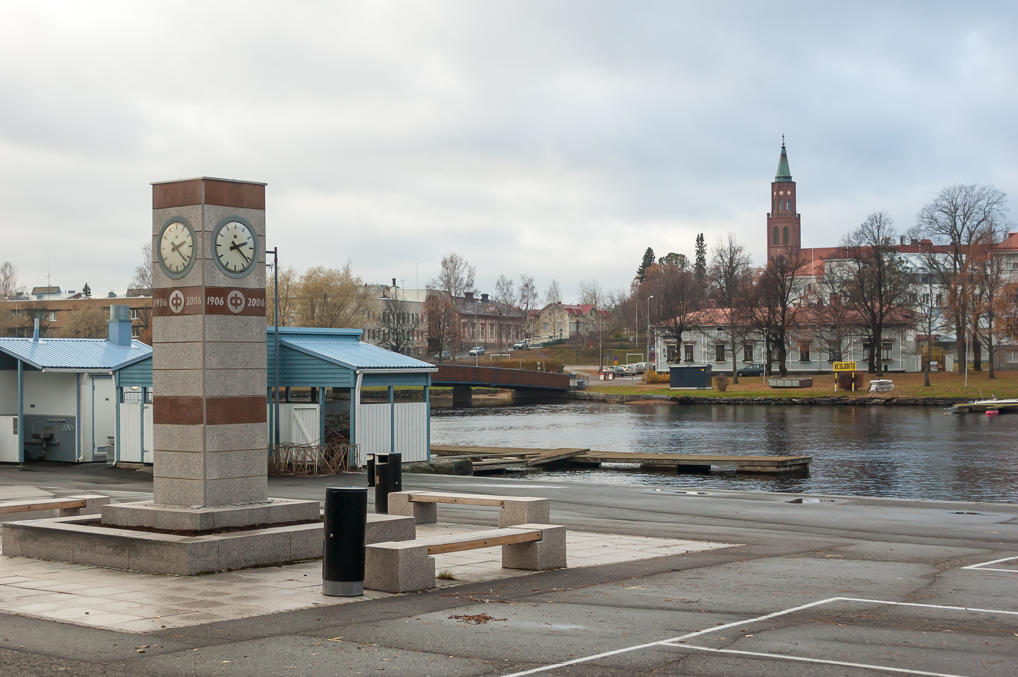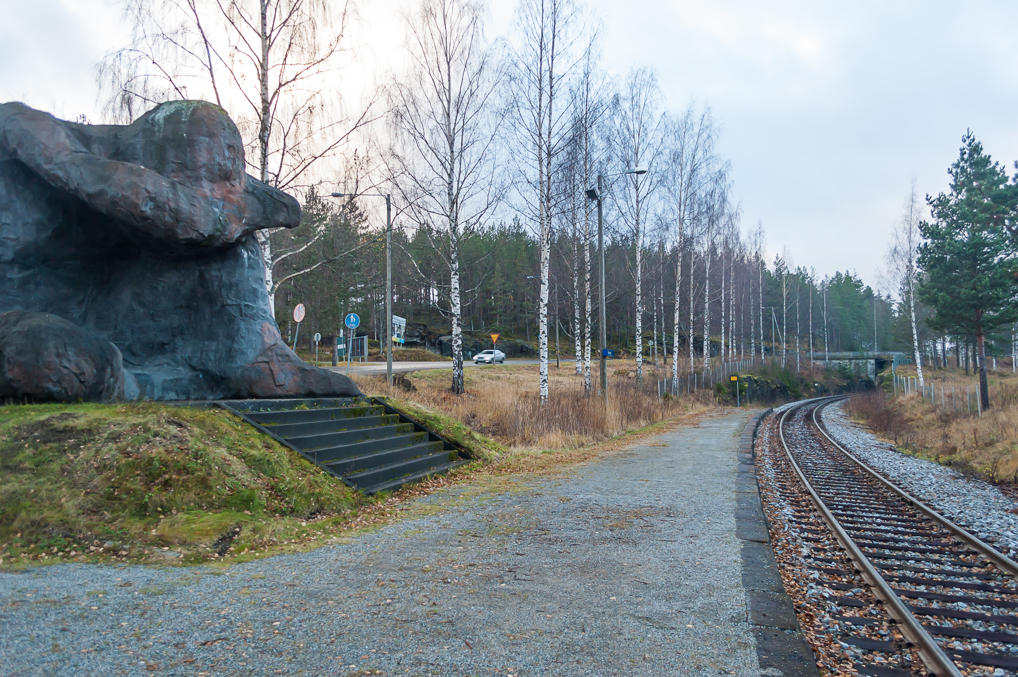Savonlinna (Finn. Savonian Fortress, after Savo province of Finland), population 35,000 is, in my opinion, one of the nicest of the smaller Finnish towns. Located on islands in Saimaa Lake, and basically surrounded by water from all sides, it is incredibly cozy and beautiful. Furthermore, it has a fairly big attraction, the medieval castle of Olavinlinna, one of the very few medieval castles preserved in Finland in mostly original shape.
Savonlinna is located in Southern Savo (Etelä-Savo) region of Finland, somewhat in the middle of Imatra-Joensuu-Varkaus triangle. This part of Finland is basically a maze of lakes, and most of Savonlinna is located on a few islands in a strait between two expanses of Saimaa lake system. It can be reached via National Road 14 from Juva (branching from Road 5, from the general direction of Helsinki), or from Parikkala (branching from Road 6, from the general direction of Russia). Savonlinna is fairly close to Russian border (120 km from Svetogorsk-Imatra border crossing checkpoint) and thus is a common destination for Russians on weekend trips.
Savonlinna should not be confused with Suomenlinna, a sea fortress in Helsinki, and probably Helsinki's best known sight. I know I used to confuse them some years ago :)
So far I've been to Savonlinna twice, and these pictures are from a weekend trip with friends in November 2015.
1. Olavinlinna Castle (Finn. Olaf's Fortress) is of course by far the best known sight of Savonlinna, and indeed of the entire Finnish Lakeland. It was founded in 1475 by Erik Axelsson Tott, a Dano-Swedish statesman, as an argument in the ongoing Swedo-Russian border dispute. The location picked for the castle was an isle in Kyrönsalmi Strait. The strait was an important waterway, and its rapid water flow usually ensured that it didn't freeze over in winter.
The history of the border between Finland (originally a region of Sweden) and Russia is long and confused and dates back to 1323, when the border was first formally established by the Treaty of Nöteborg (known as Oryehovsky Mir (Ореховский мир) in Russian, after the Russian name for Nöteborg fortress). Russia didn't exist yet as such that far in the past, and the treaty was actually signed between Sweden and Novgorod Republic, which was later subsumed by Moscow. The border started close to the modern St. Petersburg, just as it did many centuries later before the World War II, but then went on straight to the north, leaving Vyborg to Sweden, and the entire Ladoga Lake to Russia. Then it turned to the northwest, and ended in the north somewhere near modern Kalajoki at the coast of the Bay of Bothnia.
The border was poorly stated in the north. Indeed, the treaty apparently left the lands of Northern Ostrobothnia and Lapland in Russian hands, and although hardly anyone other than the Sami lived there back then, Sweden and Russia still disputed exactly who has the right to tax them. The treaty actually just stated that border ran to "the sea in the north", and Sweden began to claim that "the sea in the north" meant Arctic Ocean rather than the Bay of Bothnia, and this had been what they meant from the start of course, and if anyone misunderstood them, they were sincerely sorry for the confusion. Eventually Sweden began to establishing its own castles on the territory which had generally been considered Russian by most. The castle in the north was Uleåborg, currently known as Oulu (the actual castle isn't preserved there), and the castle in the south was Olofsborg, or Olavinlinna. It was named after St. Olof of Norway.
Subsequently Olavinlinna saw fighting in the First Russo-Swedish War of 1495-1497, and the Second Russo-Swedish War of 1554-1557. The fortress withstood the sieges and neither of these wars ultimately changed any borders. The war of 1590-1595 ended in the Treaty of Teusina, which clarified the border in the north, and affirmed its Swedish interpretation; pretty much the entire territory of modern Finland was agreed to belong to Sweden. The war of 1610-1617 was pretty disastrous for Russia (which had been in its Time of Troubles at the time), and ended with the Treaty of Stolbovo which annexed Ingria and Ladoga Karelia to Sweden. This, crucially, denied Russia access to the Baltic Sea, which was regained by Peter the Great with the establishing of St. Petersburg. Olavinlinna however ended up relatively deep in Swedish territory, and its importance was reduced. By 1639 the town of Savonlinna around Olavinlinna was formally established. The Swedish name for Savonlinna was (and is) Nyslott, meaning New Castle. In Russian it was traditionally rendered as Neishlot (Нейшлот).
Olavinlinna still fought in the Great Northern War of 1700-1721 all the same, but it surrendered to Peter's army in 1714. By the end of the war it still belonged to Sweden, but in the subsequent War of Hats (don't ask) of 1741-1743 a large chunk of southeastern Finland ended up annexed by Russia, and this time it included Olavinlinna. Russian garrison continued to maintain and improve the castle, but by the end of the final Russo-Swedish war in 1809, the entire Finland was annexed by Russia, and Olavinlinna lost any military importance. It was used as a prison for a time, and stood abandoned for some years (suffering some fires), but its significance as a historical monument was recognized as early as 1870s. To this day Olavinlinna is a remarkably well preserved castle, in fact the northernmost surviving medieval castle in the world. Although actually only three of its five towers survive.
And yes, Russia and Sweden used to fight a lot. Trampling all over the entire Finland and killing countless Finns in process each time. The latter part is usually omitted from our history textbooks.
Well, that was a history lesson, and you can see what Olavinlinna looks like at night in the picture. Really very beautiful.
2. Savonlinna Cathedral, with Finnish Civil War memorial (also known as Hero Memorial) in foreground.
3. I did most of the exploration the following day. The hotel which we had booked with Booking.com turned out to be a more AirBnb-like private residence on the outskirts of the town. The owner was a Russian, and interaction with him left a bad taste in my mouth. He strongly insisted that we cancel our booking at Booking.com and then pay him in cash with a discount (presumably still a bigger sum than what he would have got from Booking.com normally). No particular reason for us to refuse, but still, isn't it kind of stupid to try to cheat the service which is directly responsible for your sales? In general, my experience has been that Russian hotel owners in Finland are to be avoided if possible.
4. The residence itself was nice though.
5. Back in central Savonlinna. The town has a long and very nice quay along the lake coast.
6. Savonlinna is a large enough town to have tolled parking, although it is limited to a few streets and parking lots in the center. As usual, the parking was free on Sunday.
7. The weather was gloomy and wet, which is sort of expected in November. Incidentally, Finnish word for November is marraskuu, which literally means something like "Death Month". Anyway I liked it.
The city directly faces Saimaa lake, or rather, its part called Pihlajavesi (Finn. Rowan Water). The smaller section of Saimaa to the north of the city is called Haapavesi (Finn. Aspen Water). Pihlajavesi, like nearly all parts of Saimaa, is full of islands and skerries, and it doesn't really look all that large; islands in the background are only a kilometer or so away.
8.
9. A few old cool-looking wooden steamers were moored at the lakefront. They offer tours of Saimaa in summer months. I actually went on such a tour the next time I've been to Savonlinna, and can highly recommend it. I took my parents with me, and that was actually their very first experience of Finnish nature.
The steamer in the picture is named after Punkaharju, a village between Savonlinna and Parikkala on Road 14. Punkaharju is a well-known and very beautiful place, with narrow eskers (ridges left behind by a retreating glacier, looking sort of like railroad embankments) overgrown with pine trees, raising from Saimaa. It is considered one of the national landscapes of Finland. You can enjoy it while just driving from Parikkala to Savonlinna. If you're doing that I also strongly advise to took a detour through an older "museum" road, marked as Museotie. It is built on top of these eskers, meandering with a few of them, and eventually looping back to the main Road 14 some kilometers later. It is one of the prettiest road of all Finland. Unfortunately I don't have any pictures on hand.
10. Less old and cool ships are available as well.
11. A pedestrian bridge over Haapasalmi Strait leads to the cathedral.
12. Small Saimaa ringed seal statue in the lake. Saimaa ringed seal is a rare species of seals living, appropriately enough, in Saimaa Lake. There are only a few hundred individuals, and efforts to improve their numbers still continue. The seals can in theory be sighted in Savonlinna, but this is exceptionally rare. They mostly live in the area of Linnansaari and Kolovesi National Parks (and it's probably very difficult to spot one even there).
Saimaa seals gained some prominence in 2016 with NorppaLive, a live online feed of a common seal resting place in some undisclosed location in Saimaa. NorppaLive got unexpectedly popular, and was repeated again in 2017. The particular favorite of the watchers was a chubby seal nicknamed Pullervo, a pun on Kullervo from the Kalevala epic.
13.
14. Apart from the lakefront, central Savonlinna looks like about what you'd expect from a Finnish town that size, with numerous small shops and offices.
15. The cathedral is built on a huge rock, and visible from many points in the city. Finished in 1878, it became the seat of Diocese of Savonlinna. It is still classified as a cathedral, rather than a mere church, although the diocese was eventually moved first into Vyborg, and then after the war into Mikkeli.
16. Exercise trail running along the lake coast a little farther from the city center.
17. Many residential buildings are built really close to the lake. I'd pay a lot to live in such an apartment!
18.
19.
20. Most small islands actually have one or a few summer cottages built on them, accessible only with a private boat, and lacking electricity apart from solar batteries. No one really equals the Finns when it comes to cozy summer cottages.
21. A monument to Joel Lehtonen (1881-1934), a local writer. He was known for his thoroughly depressing books, and eventually killed himself.
22.
23. We had lunch in this Hesburger.
24. Haapasalmi Strait flows right through the middle of the city, separating two of its biggest islands.
25. Behind the Road 14 bridge and the rail bridge over Haapasalmi there is a foot bridge going to the island of Vääräsaari (Finn. Crooked Island).
26. The main sight of Vääräsaari is an old and luxurious hotel named Spa Casino. I'm not sure why it is named "Casino"; it certainly doesn't have an actual casino at the moment.
27. A few more small islands are linked to Vääräsaari with foot bridges in turn. These islands are excellent picnic spots, with only rocks and pines there.
28.
29.
30. Newer part of the Spa Casino Hotel.
31.
32.
33. Back to Savonlinna center.
34. Savonlinna has a railroad, with a minimalistic-looking station very close to the central square, but it saw better times. The only passenger service it currently has is to Parikkala. Westbound Pieksämäki line is shut down completely, even partially disassembled, I believe.
35. Savonlinna-Parikkala train is pretty tiny, too. A railbus of sorts. There are five departures a day, and in Parikkala you can change to a train to Lappeenranta and Helsinki, or to Joensuu. But it's probably easier just to take a bus in first place. Savonlinna also has a small airport, but it only has charter flights.
36. Some more Savonlinna streets.
37. Savonlinna Small Church. It's actually named that.
38.
39. Let's go see the castle now! The streets near the castle are built up with cozy wooden villas, and paved with cobblestones.
40. That's a Dacia Sandero! Like my Renault Sandero but under Dacia brand which is more honest (these cars have little to do with Renault other than brand ownership) and is used for these models in most countries. Its front is different from my car but otherwise it's pretty similar and even the color matches.
41. And here's the castle. It is also located on an island, which can be reached through another small island named Tallisaari (Finn. Stable Island).
42. The Black Ram statue on Tallisaari. Legend has it that this black ram saved the castle from a Russian siege in 1656. While the castle was besieged, a thunderstorm began, and lightning struck the castle and set tar reserves, stacked on its ramparts, on fire. A black ram was wandering the ramparts in search of something to eat, and was terrified by the lightning and subsequent raging fire. Russian soldiers saw a huge black horned beast running around on the castle, against the backdrop of flames, and thought it was Satan or Baphomet or something, dropping their weapons and fleeing. The legend does not say what happened to the ram afterwards so I guess the defendants had some fried mutton to celebrate the victory.
43. Another statue on Tallisaari is of a huge armored knight. This is Eric Axelsson Tott himself, the founder of the castle.
44. "Home, Faith, Fatherland" monument. Koti, uskonto ja isänmaa was a popular Finnish phrase summarizing the conservative ideals. It was particularly popular between the world wars, and when Finland was forced into the Winter War Mannerheim himself proclaimed that they were fighting for "home, faith, and fatherland". The slogan is still occasionally used by the conservative-leaning parties.
45. Rail and highway bridges over Kyrönsalmi Strait, as seen from Tallisaari. The strait is an important waterway, and both bridges can be moved to let ships through. The rail bridge in particular has a somewhat uncommon design, with a section of the bridge (immediately to the right of the truss part) rotating in the horizontal plane, rather than raising in any way.
46.
47. The castle certainly looks dramatic. I must however note that it's not really all that interesting on the inside. There are pretty much no historical interiors recreated, and you only get to see some mostly empty rooms. It's still a cool experience of course if you haven't seen many castles before.
48. An adult entry ticket costs 9€. Not all of the interiors are open for public, and towers can only be visited with a guided tour, which leave very frequently every day and are available in various languages.
49. In one of the rooms you can see a short movie with recreations of what the life in the castle looked like in various periods. It is a bit amateurish but still quite cool.
50. Guardhouse, obviously significantly newer than most of the castle, is where the museum shop is.
51. Some interiors.
52.
53. A model of the castle. As you can see it neatly occupies the entire small island.
54. Ramparts.
55. Courtyard with a water stream.
56.
57. You can walk around most of the ramparts and pretend you're shooting at some bad guys through the arrow holes.
58.
59. While leaving the castle we heard a very loud siren slowly getting closer. A fire engine finally appeared and, to our surprise, drove almost to the bridge towards the castle. Apparently there was a small fire in someone's shed.
60. The firefighters took a smouldering garbage bin out of the shed, and extinguished it. No one was in any danger but apart from the fire engine there was also a police car, with policemen watching the show from afar.
61. We returned back to the city center (a ten minute or so walk from the castle) where our car was parked, and set out towards home.
62. Briefly stopped at a railway station named Retretti, not far from Savonlinna, which had an odd huge misshapen statue next to it.
63. The railroad continues on to Parikkala, and so do we.
Verdict: highly recommended! Savonlinna so far remains my favorite Finnish small town (together with Hamina, although the latter is significantly smaller). And apart from the castle be sure to take a tour on an old steamship. You'll love it too, I promise.


